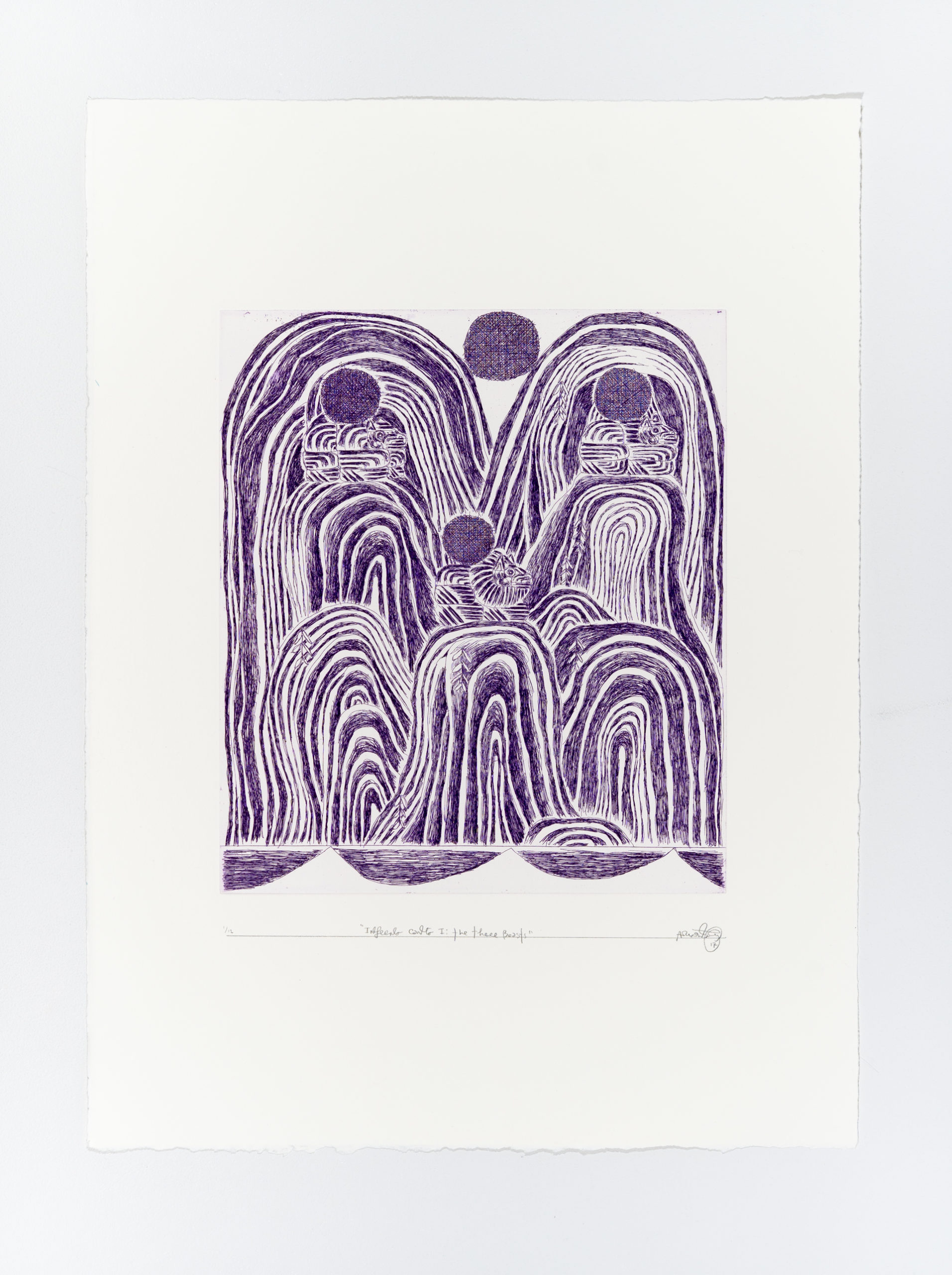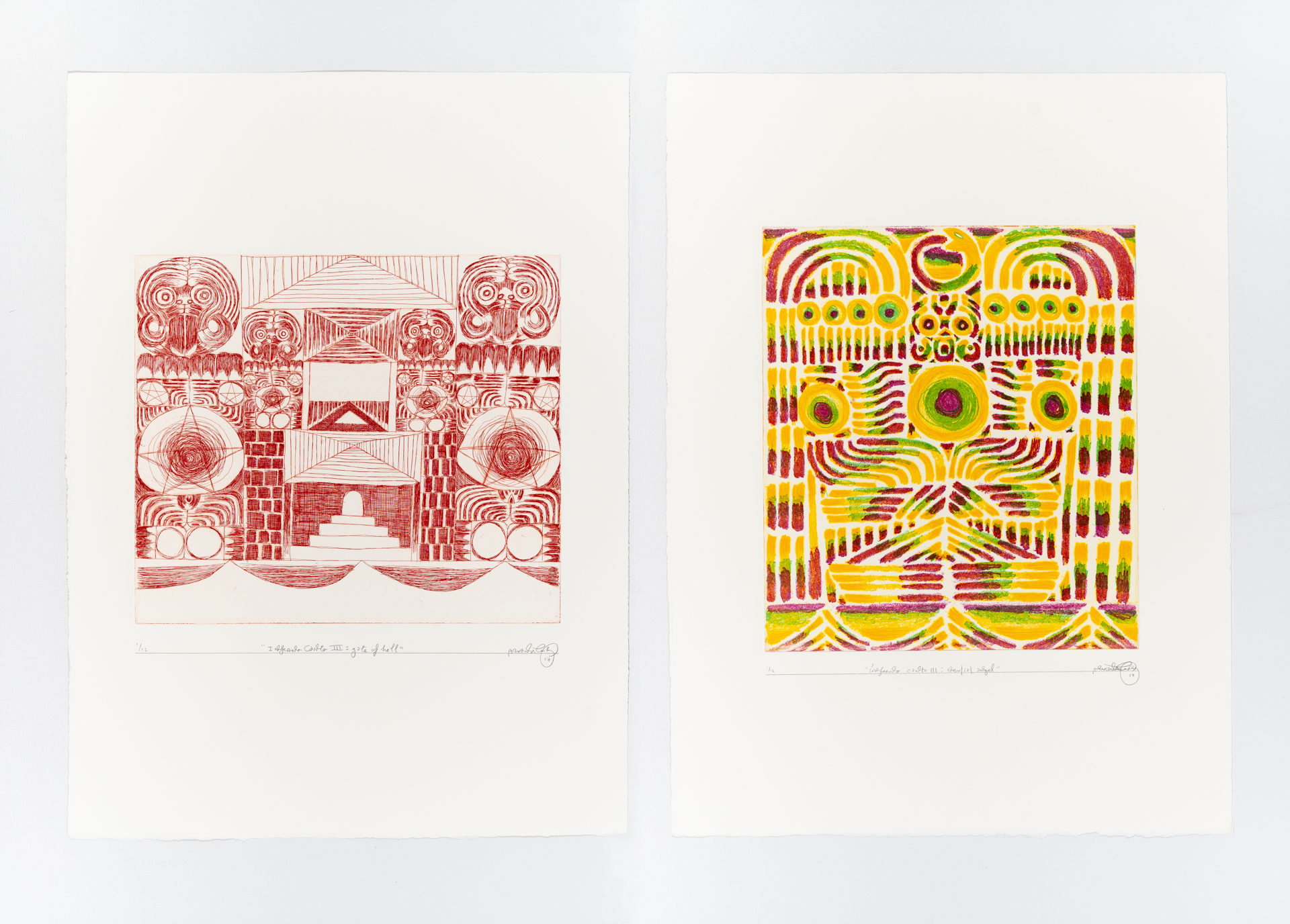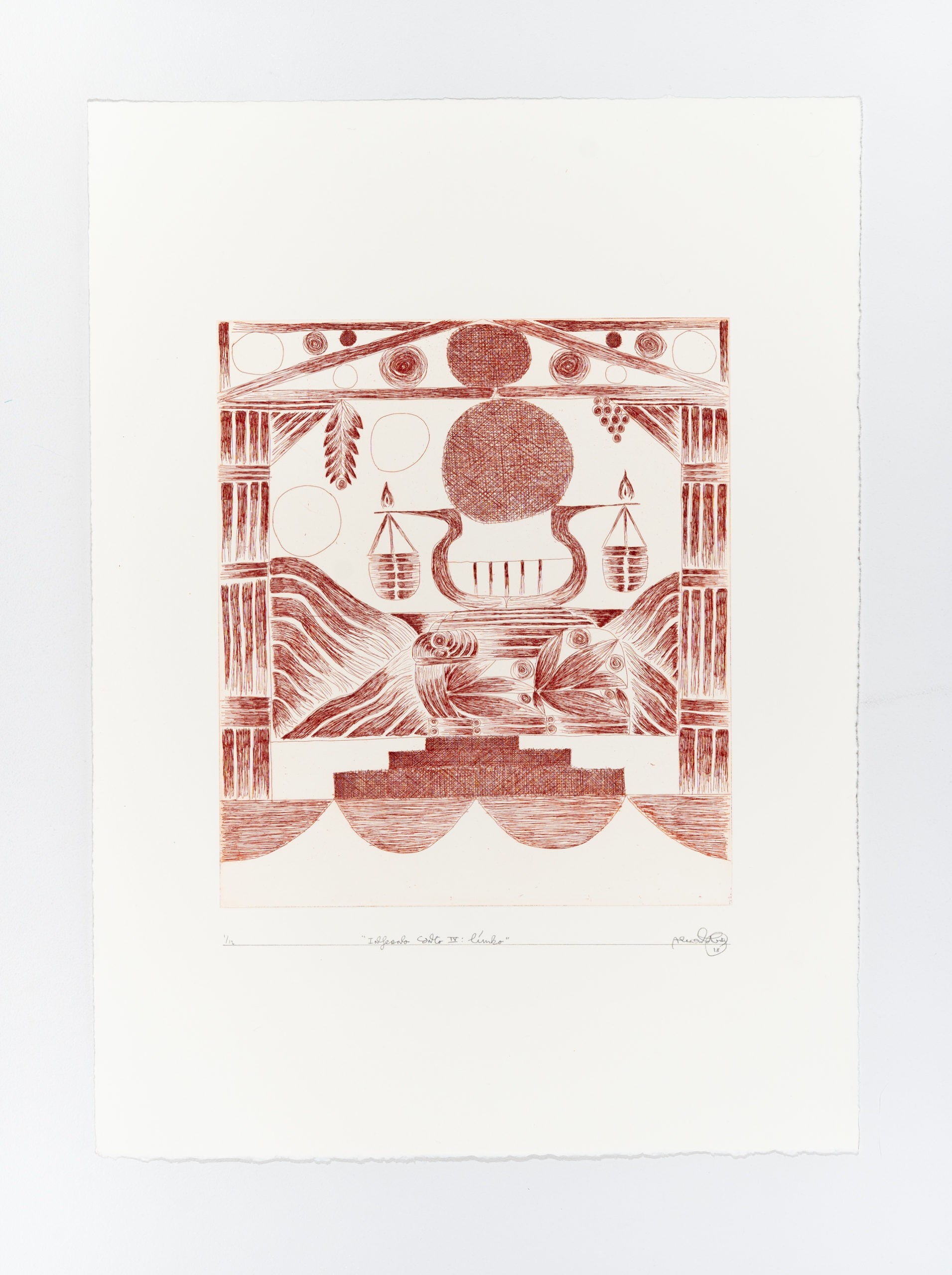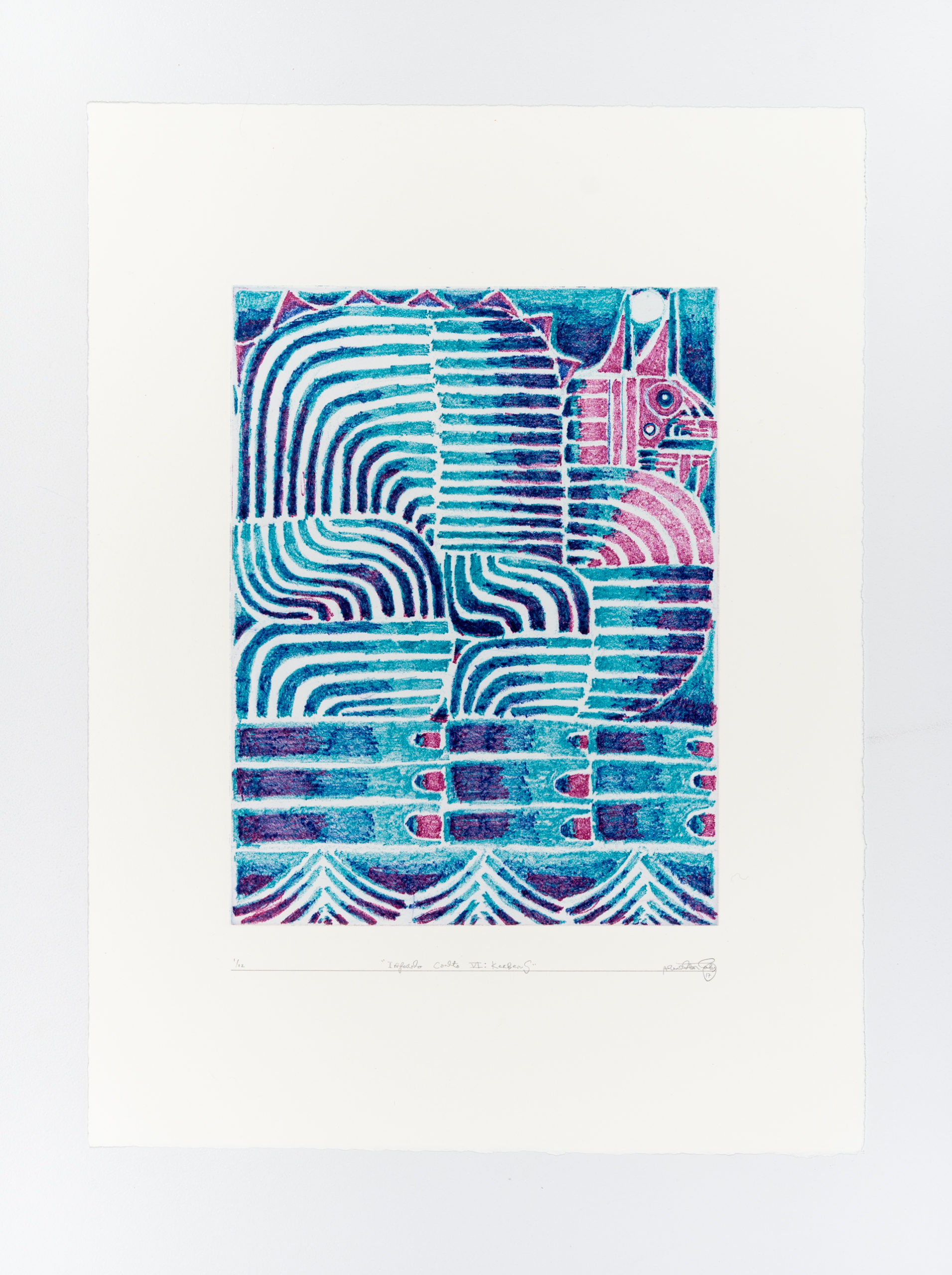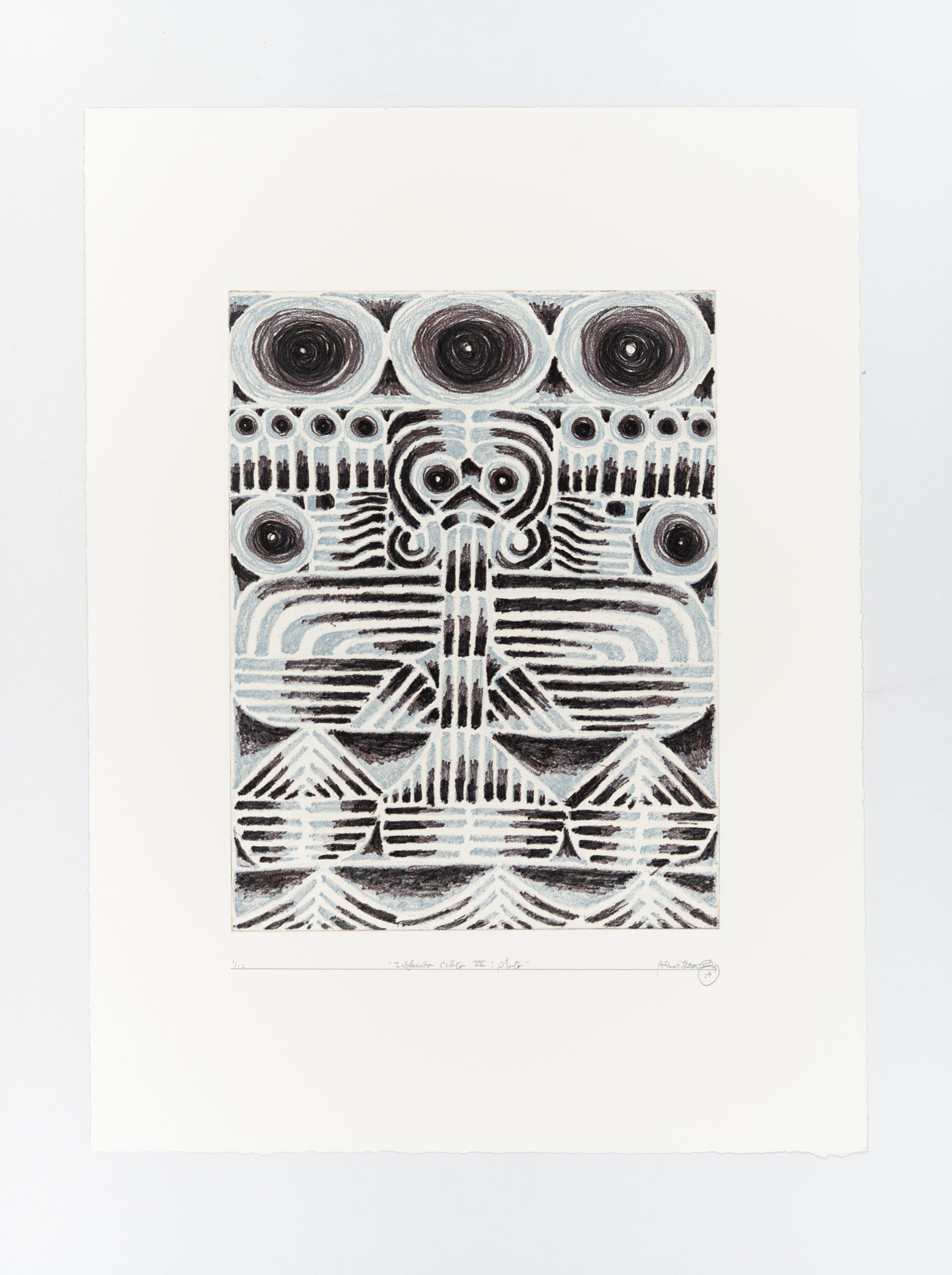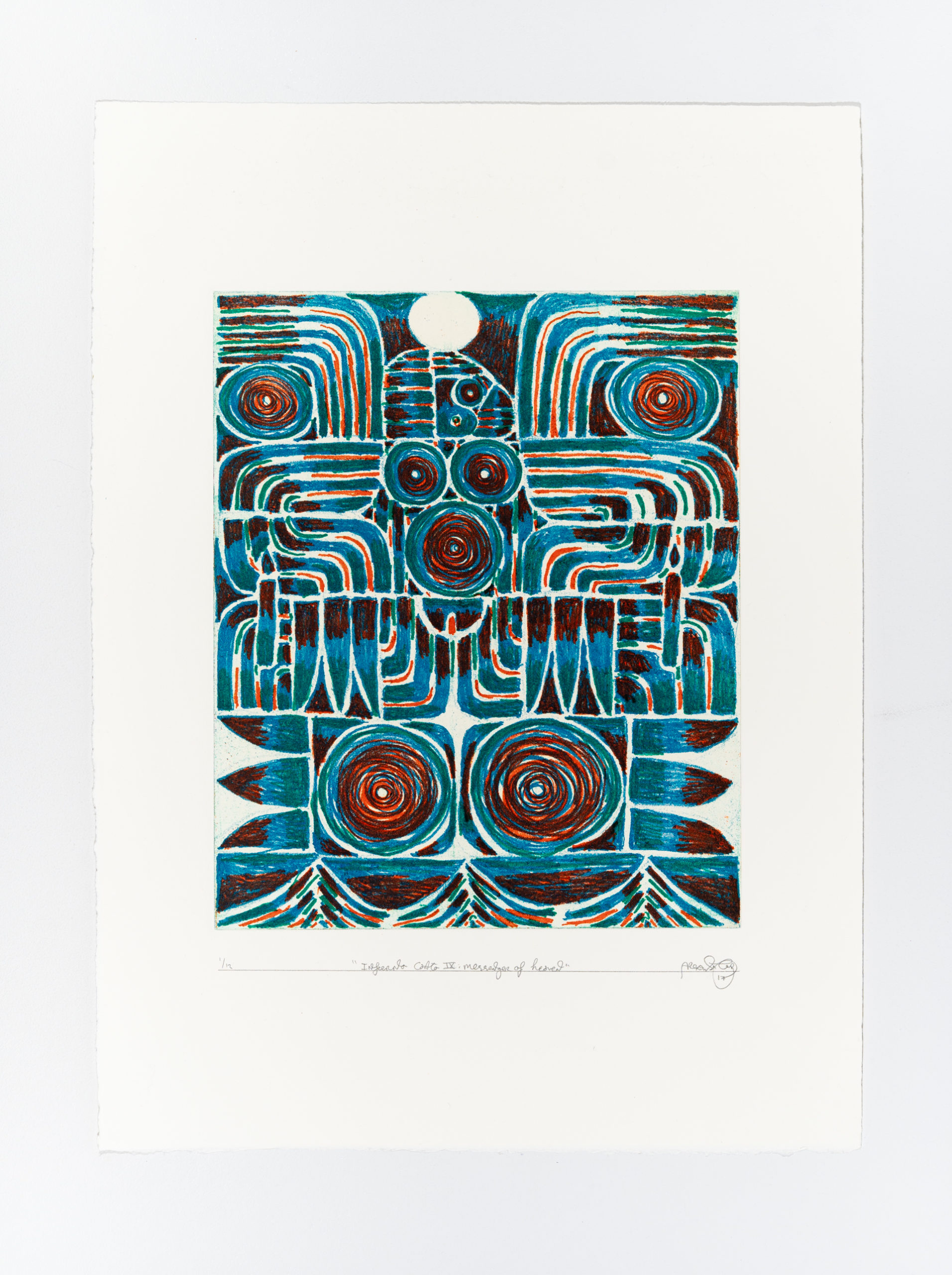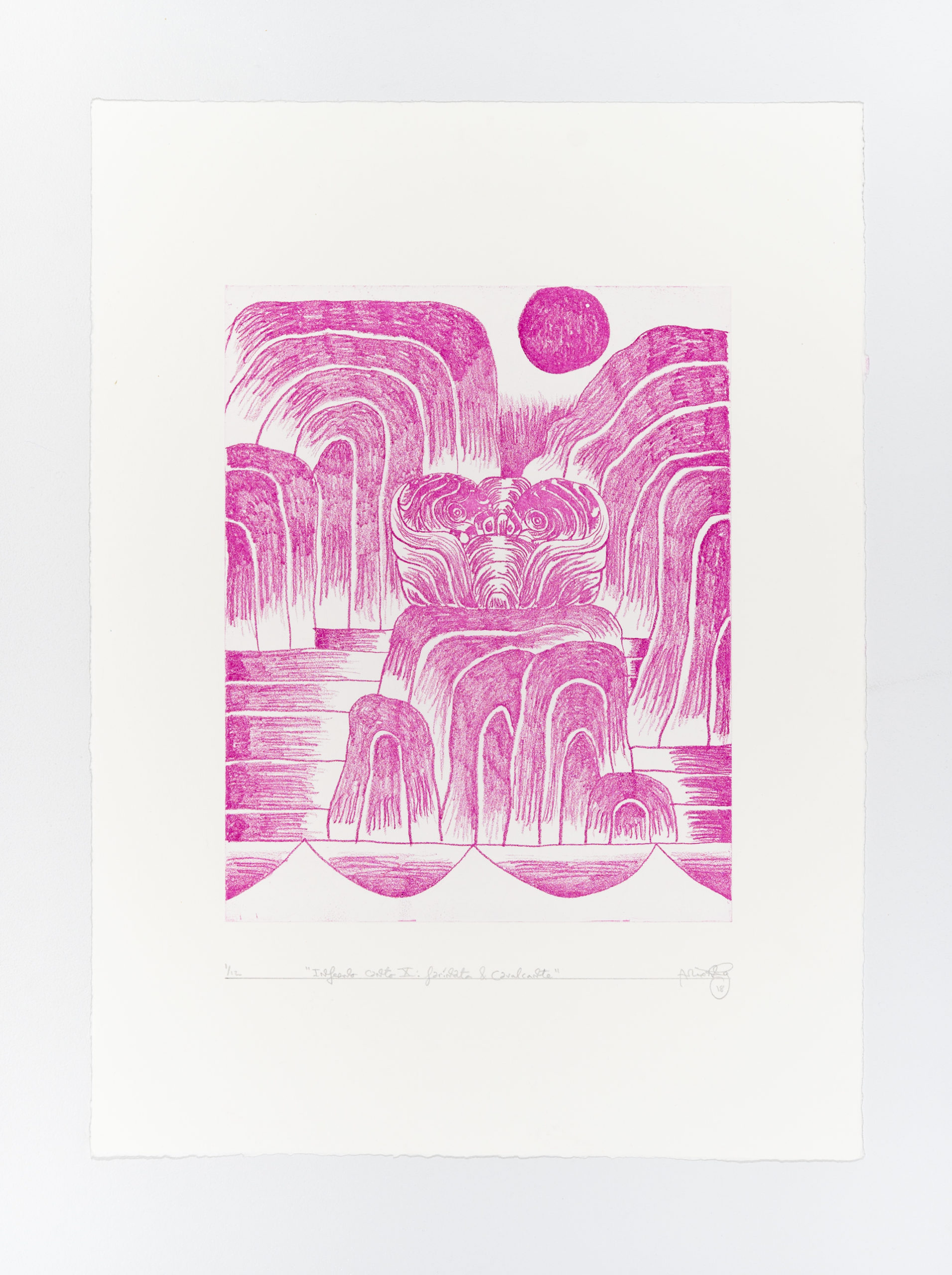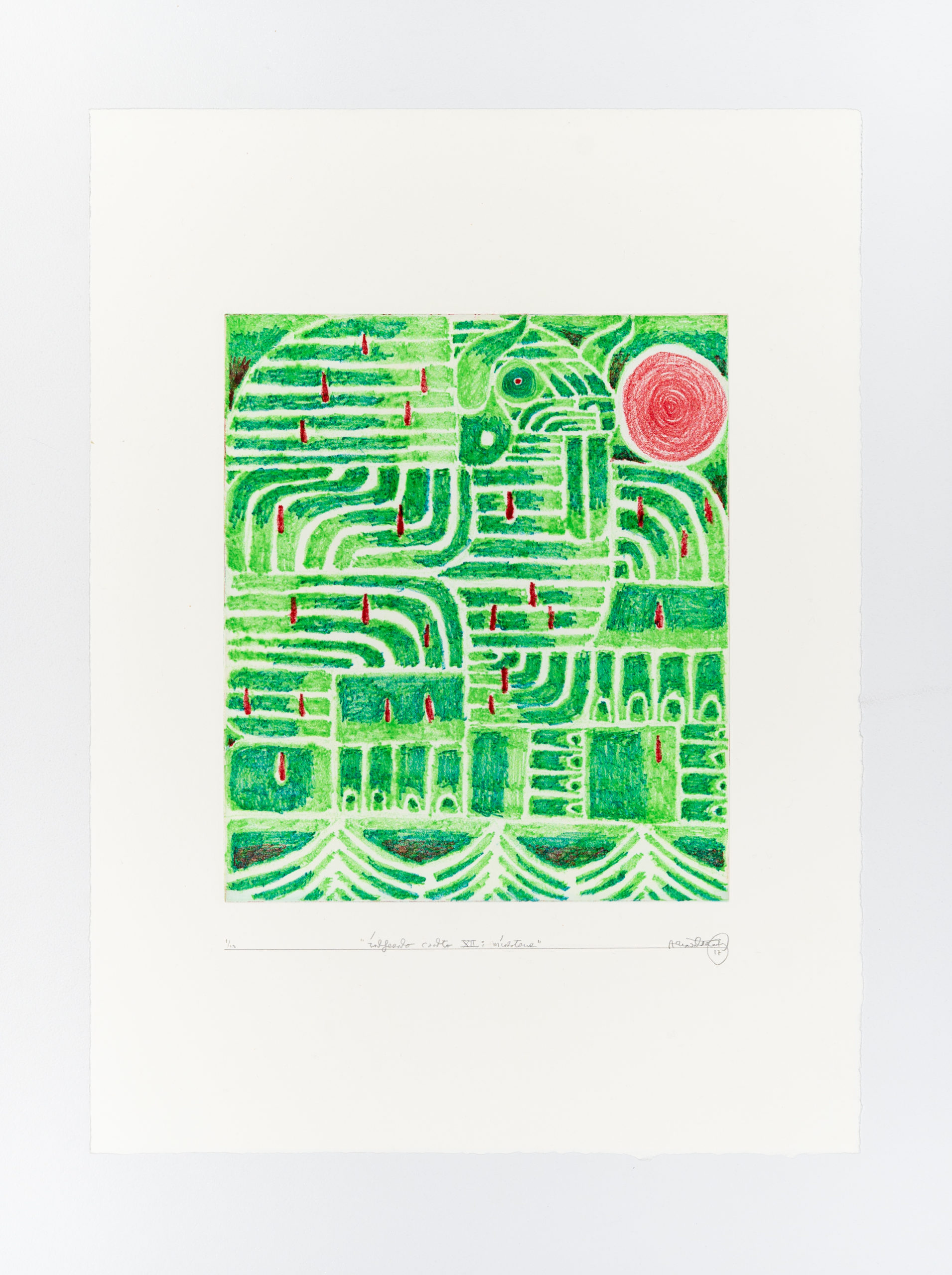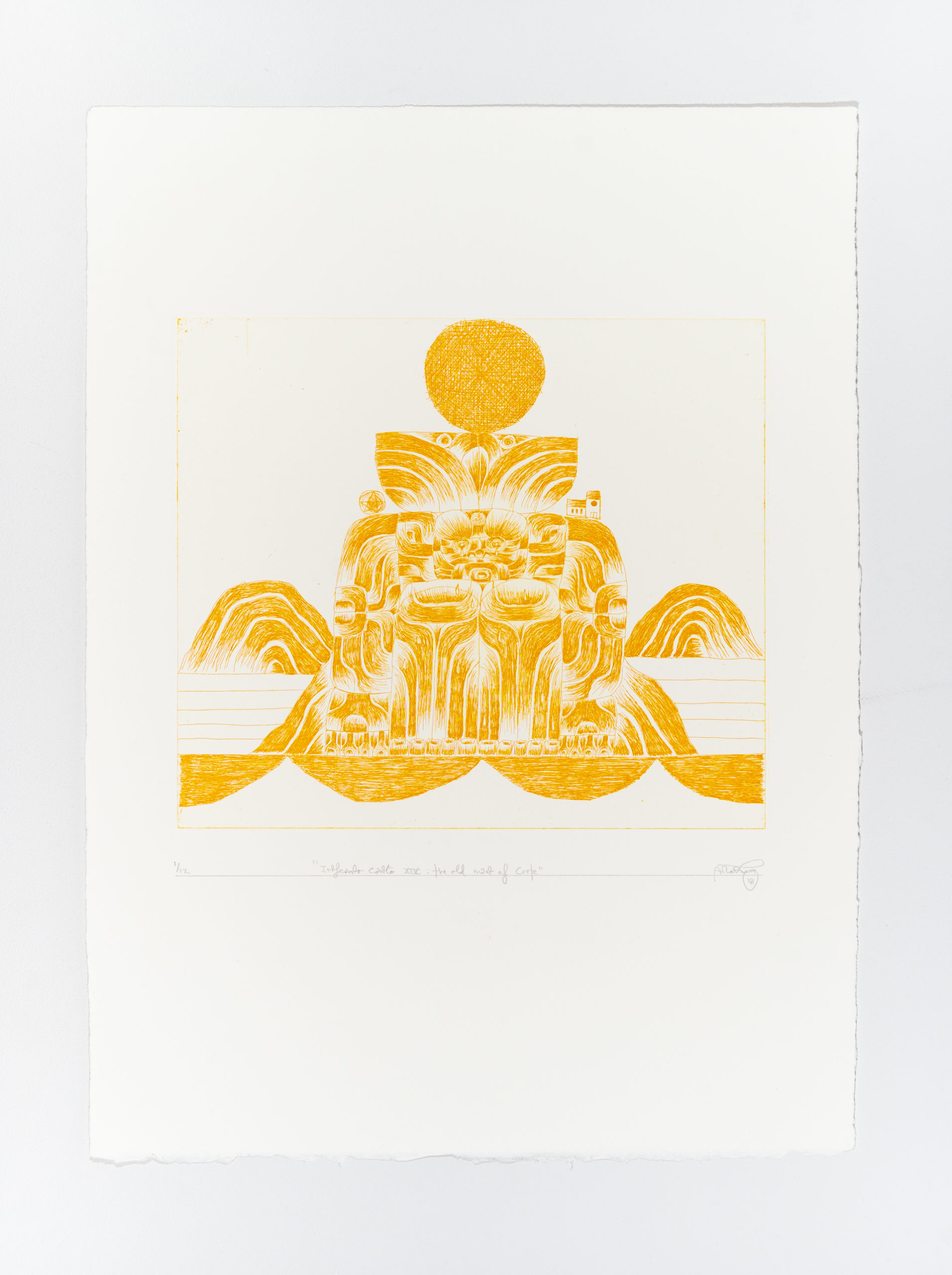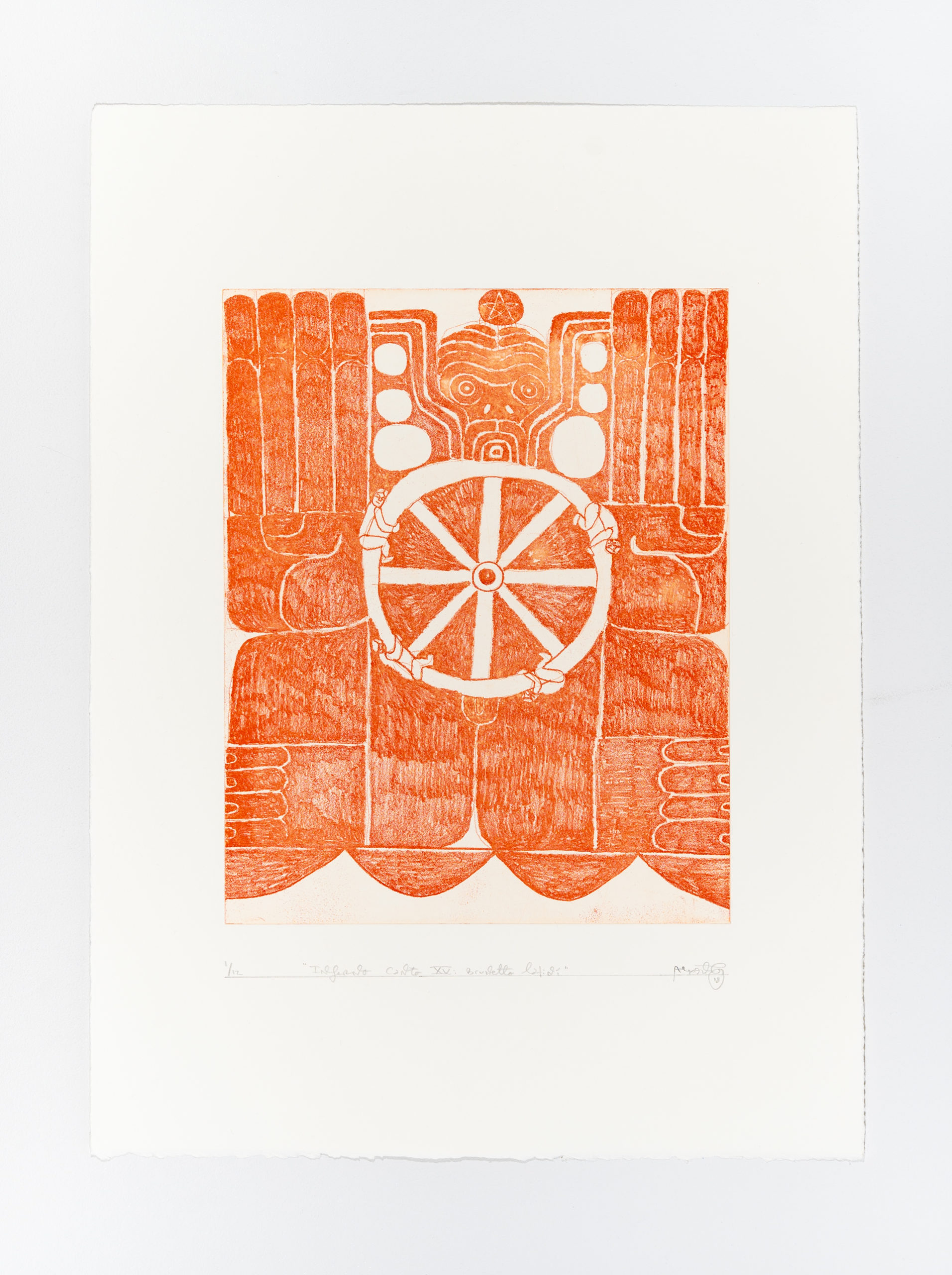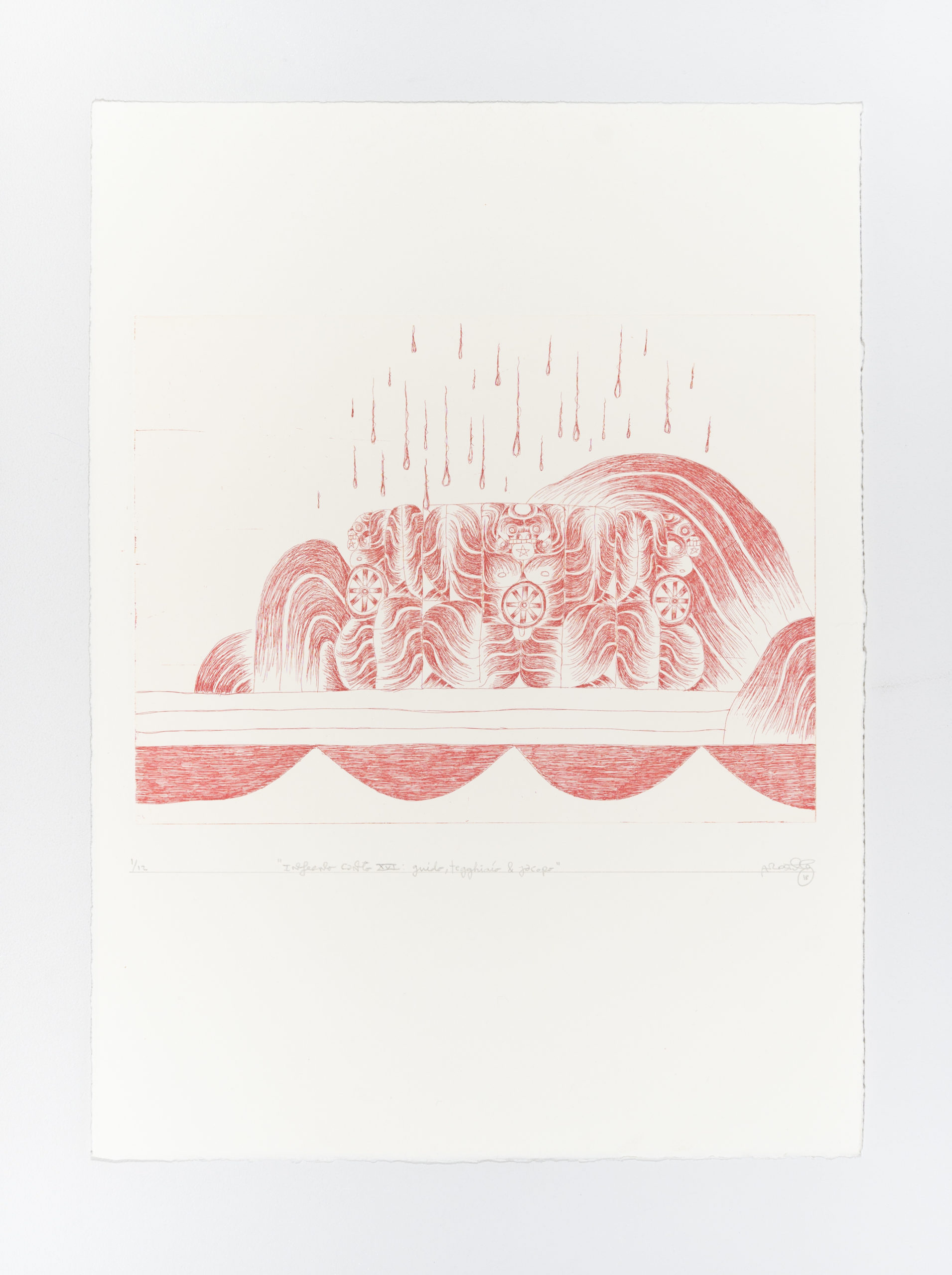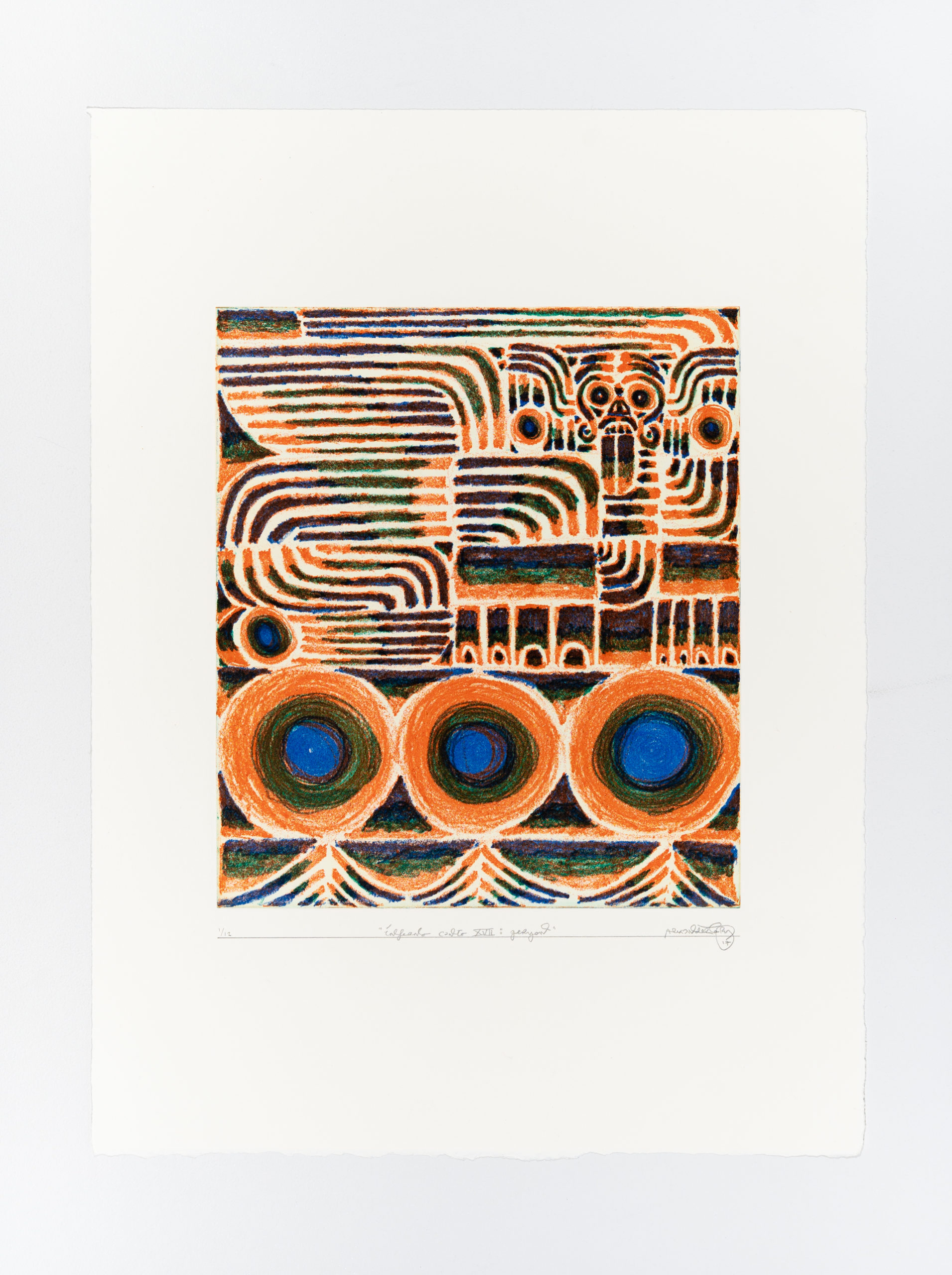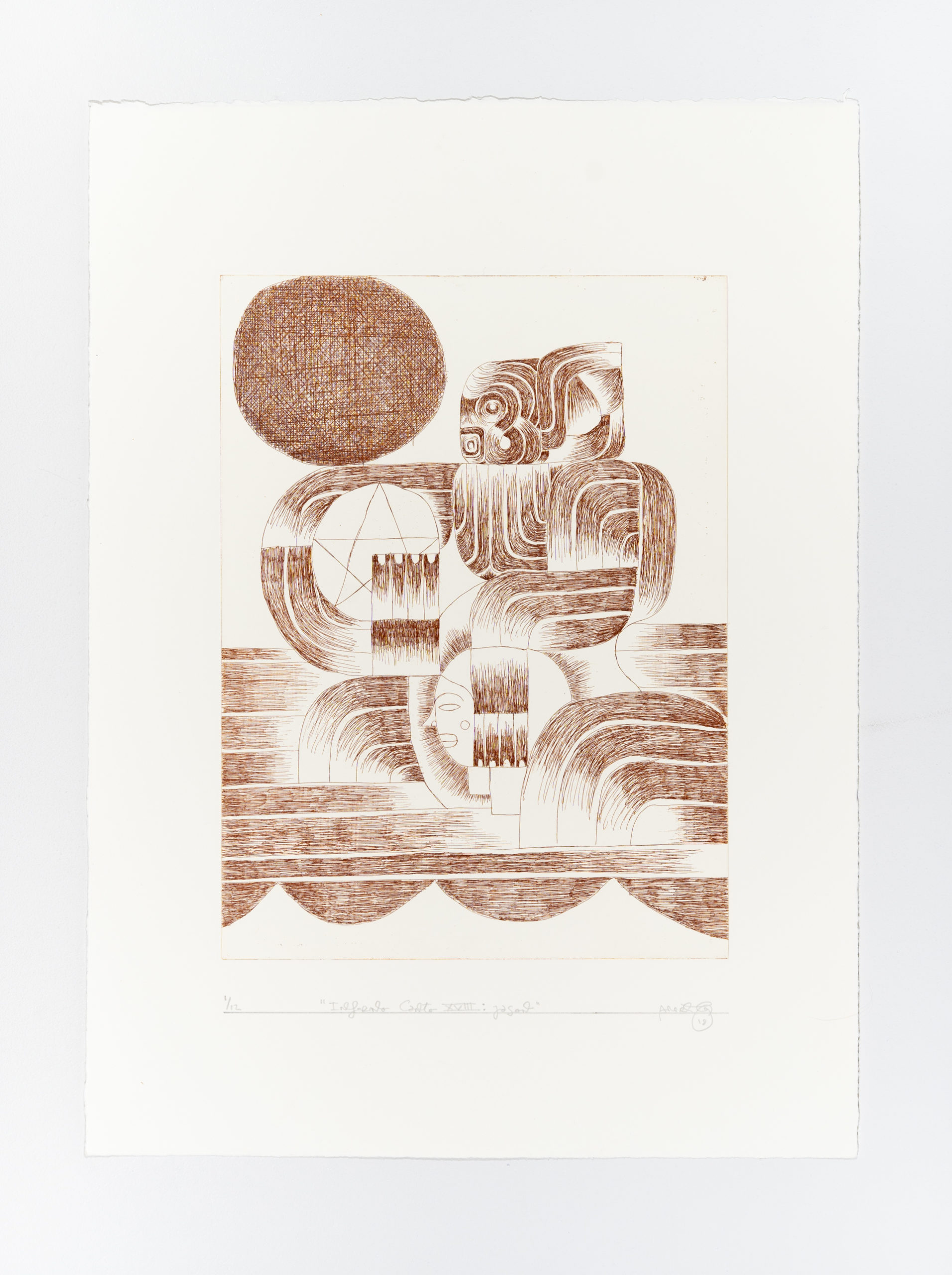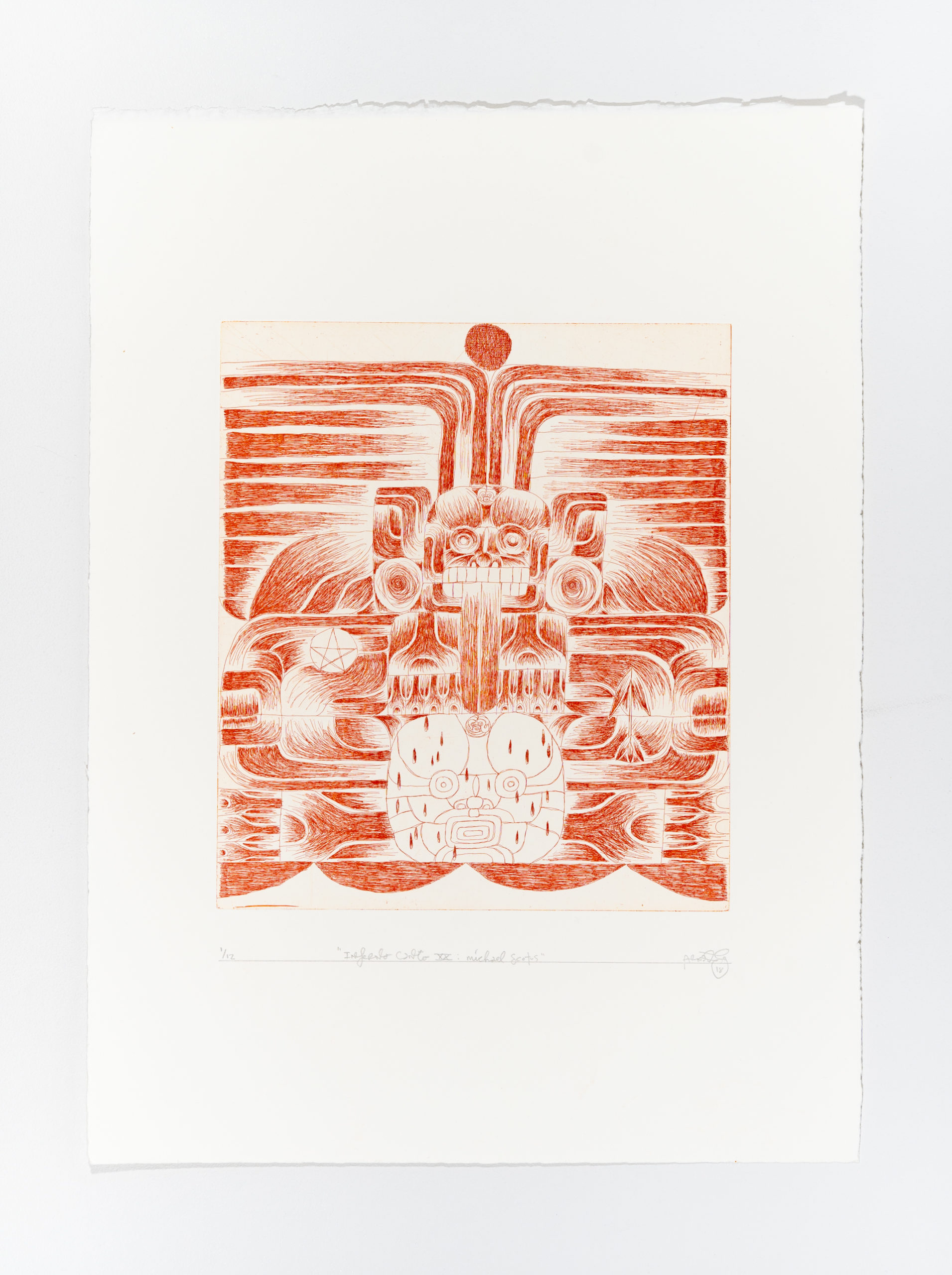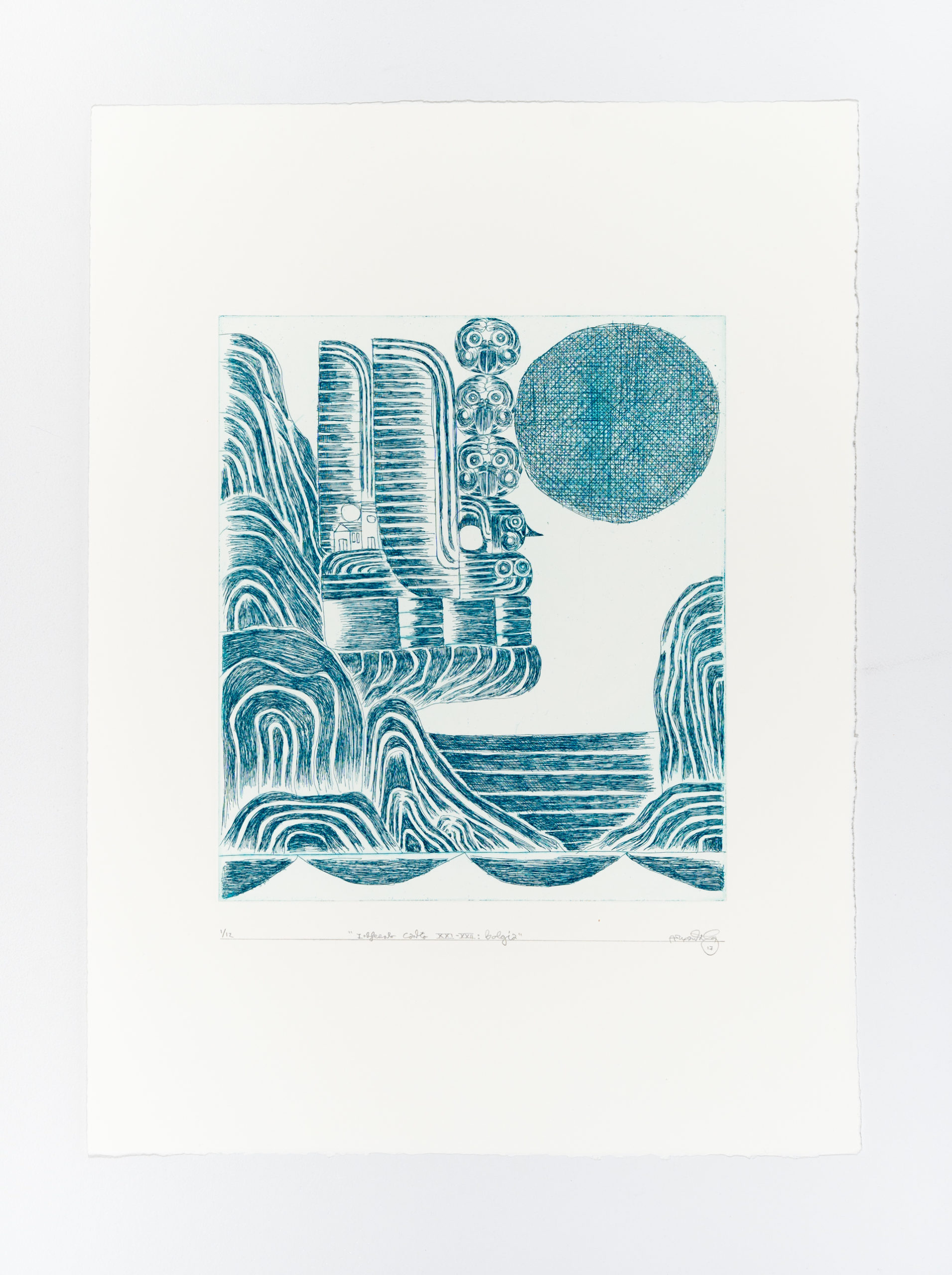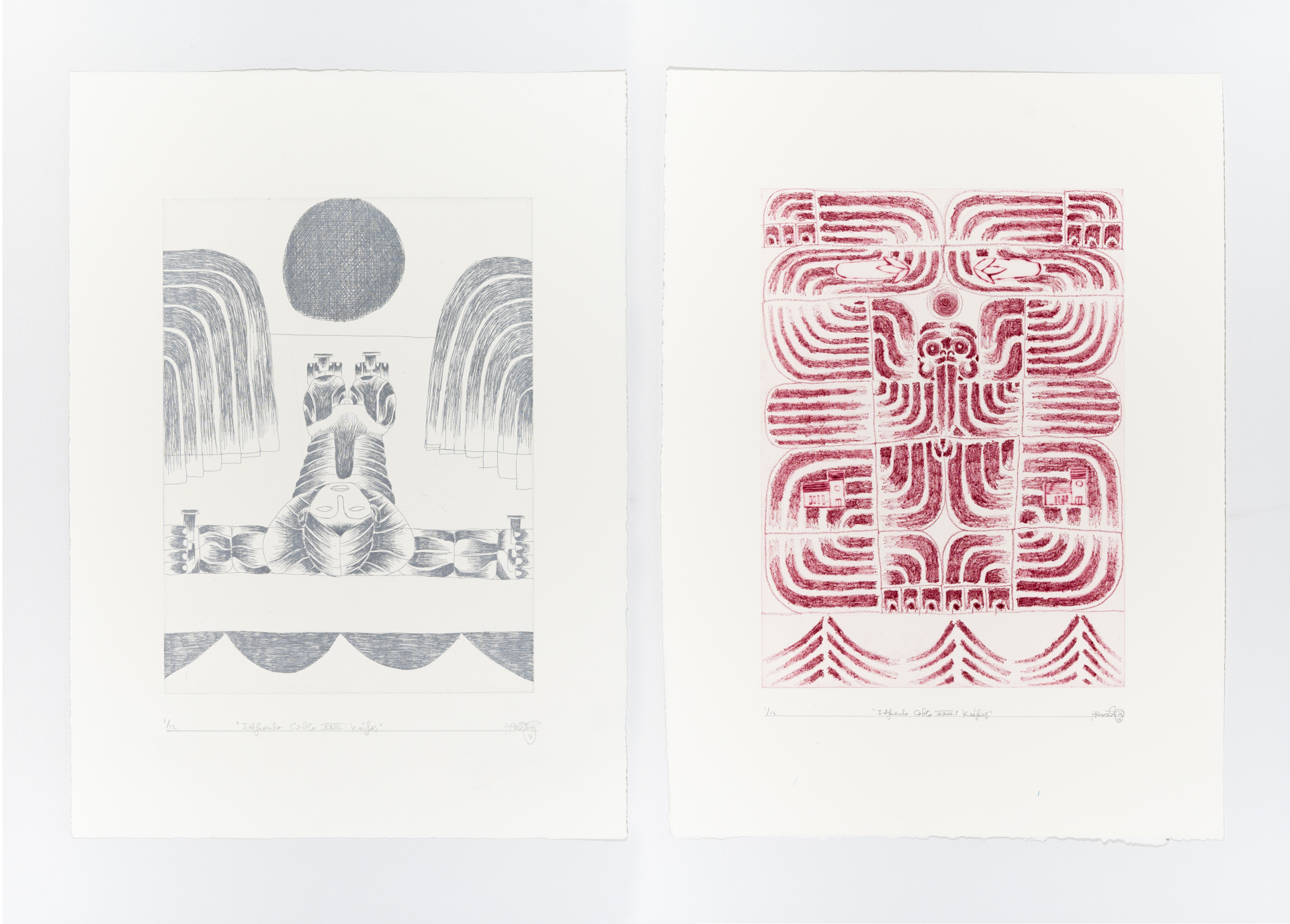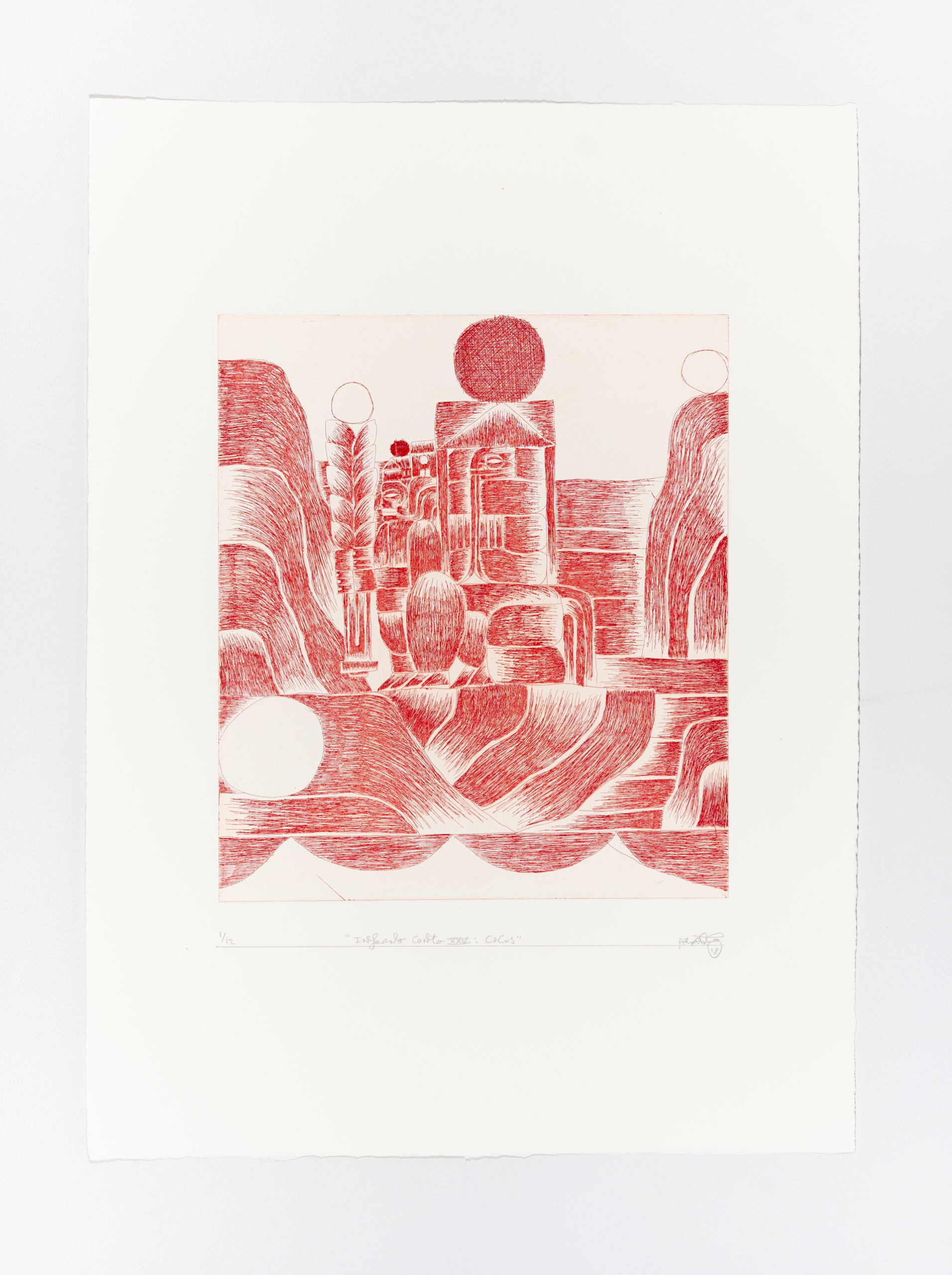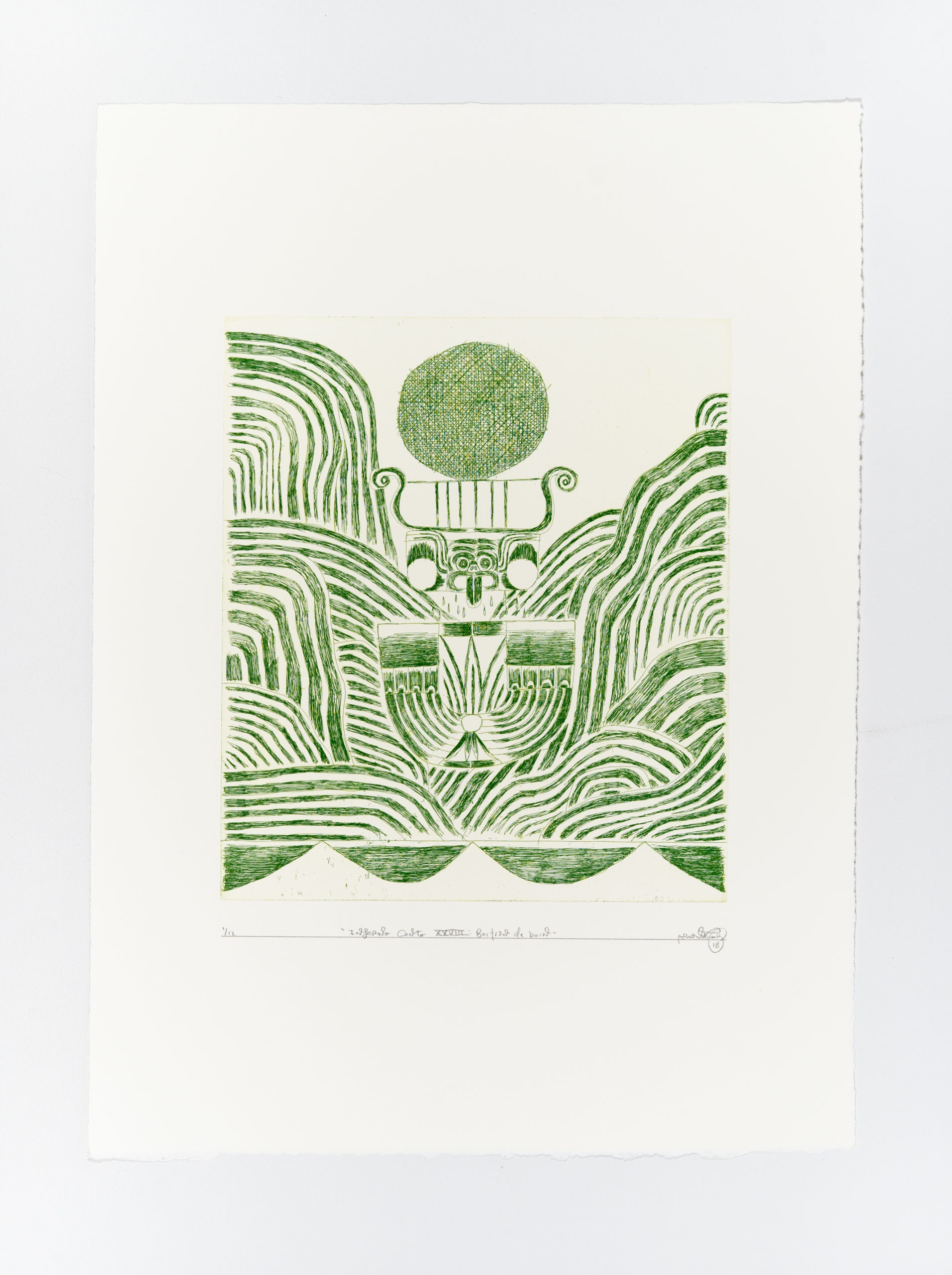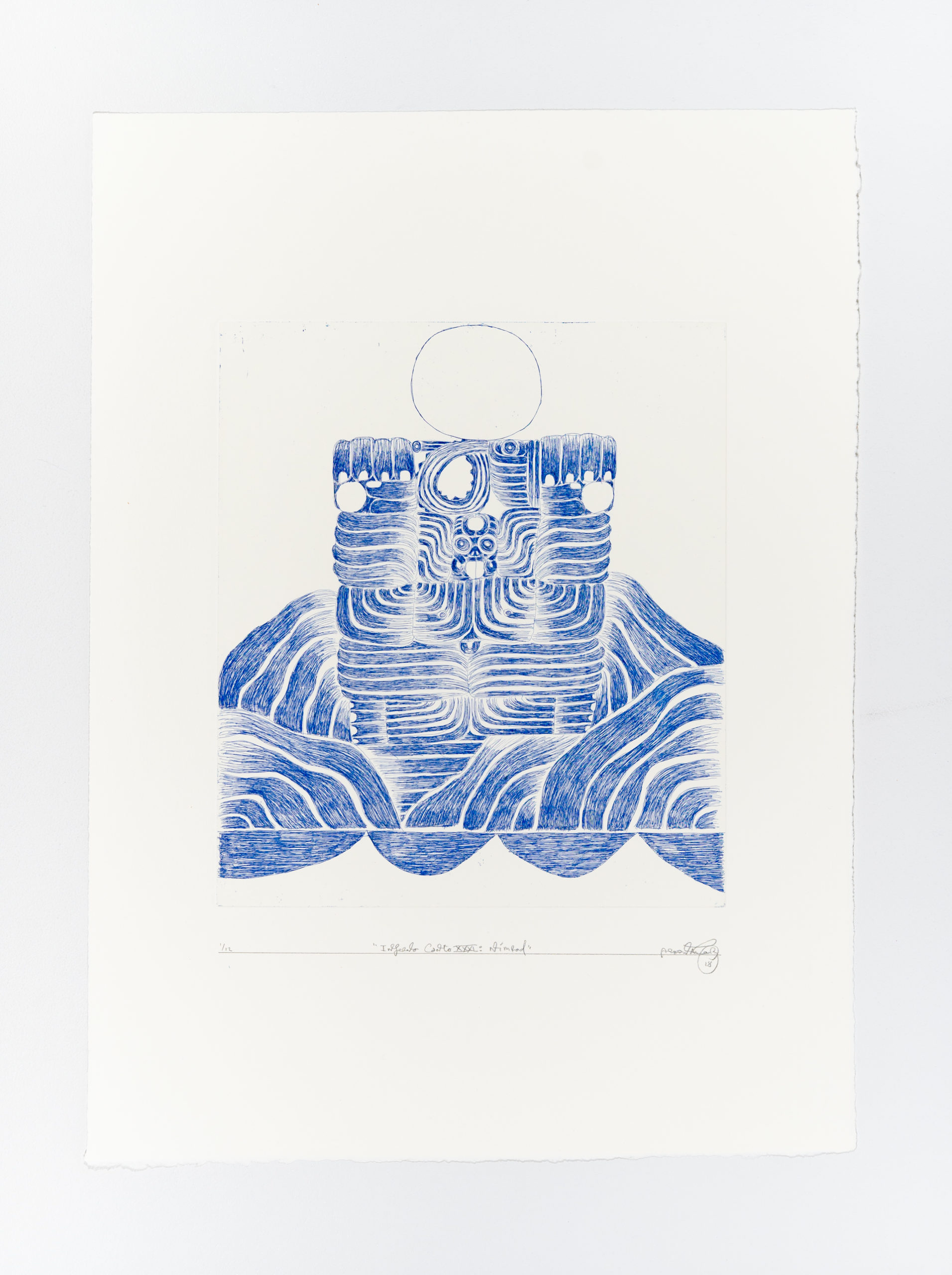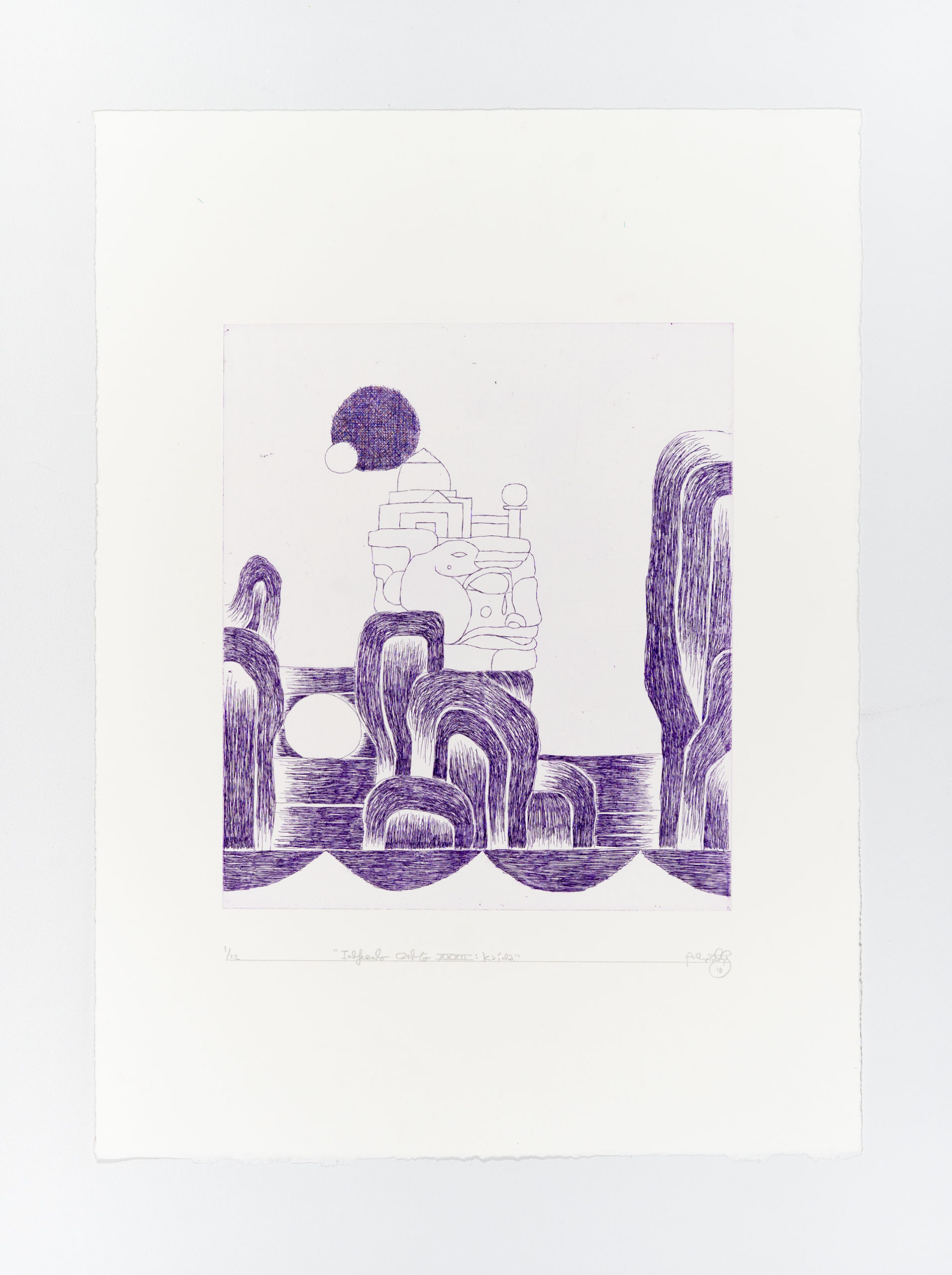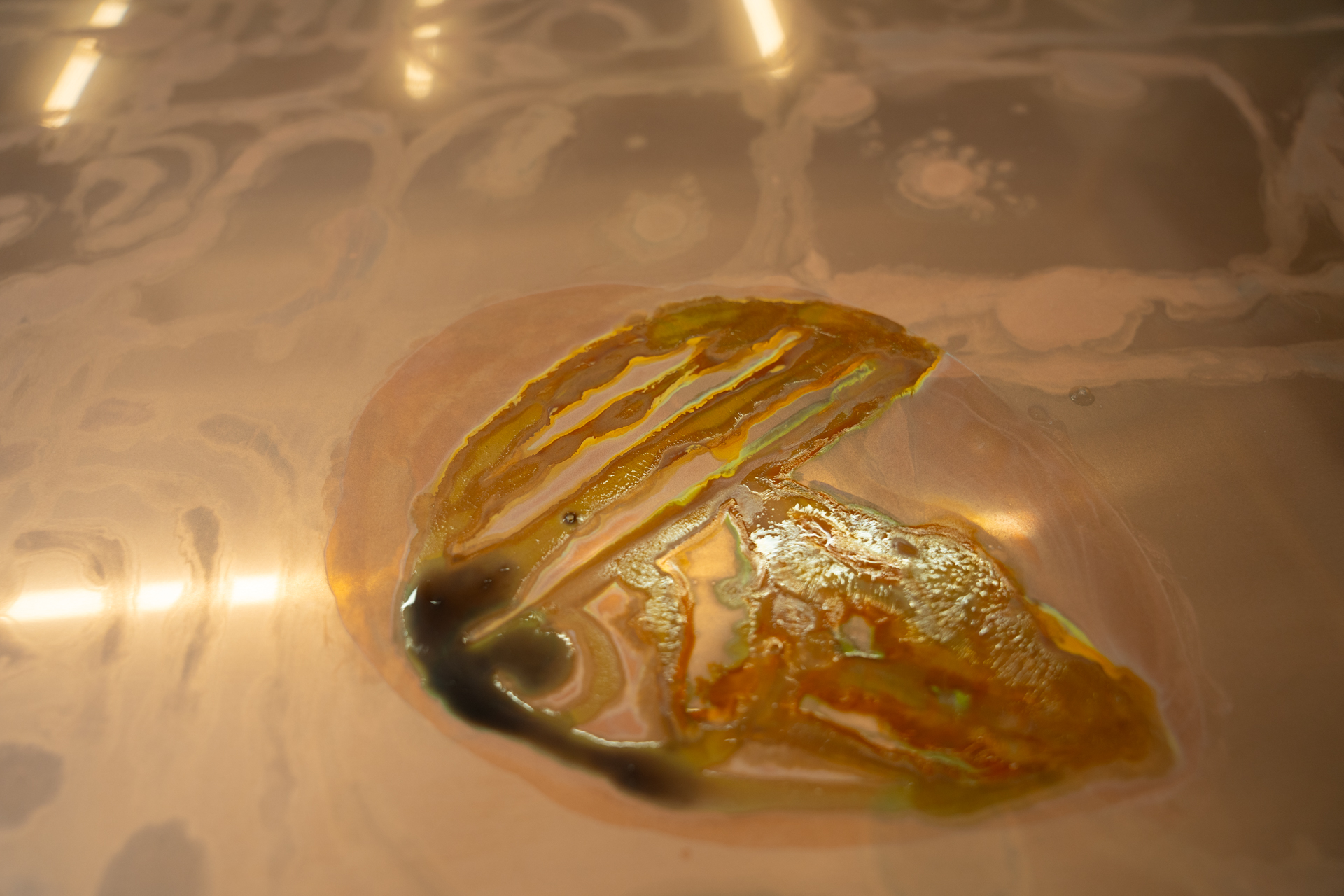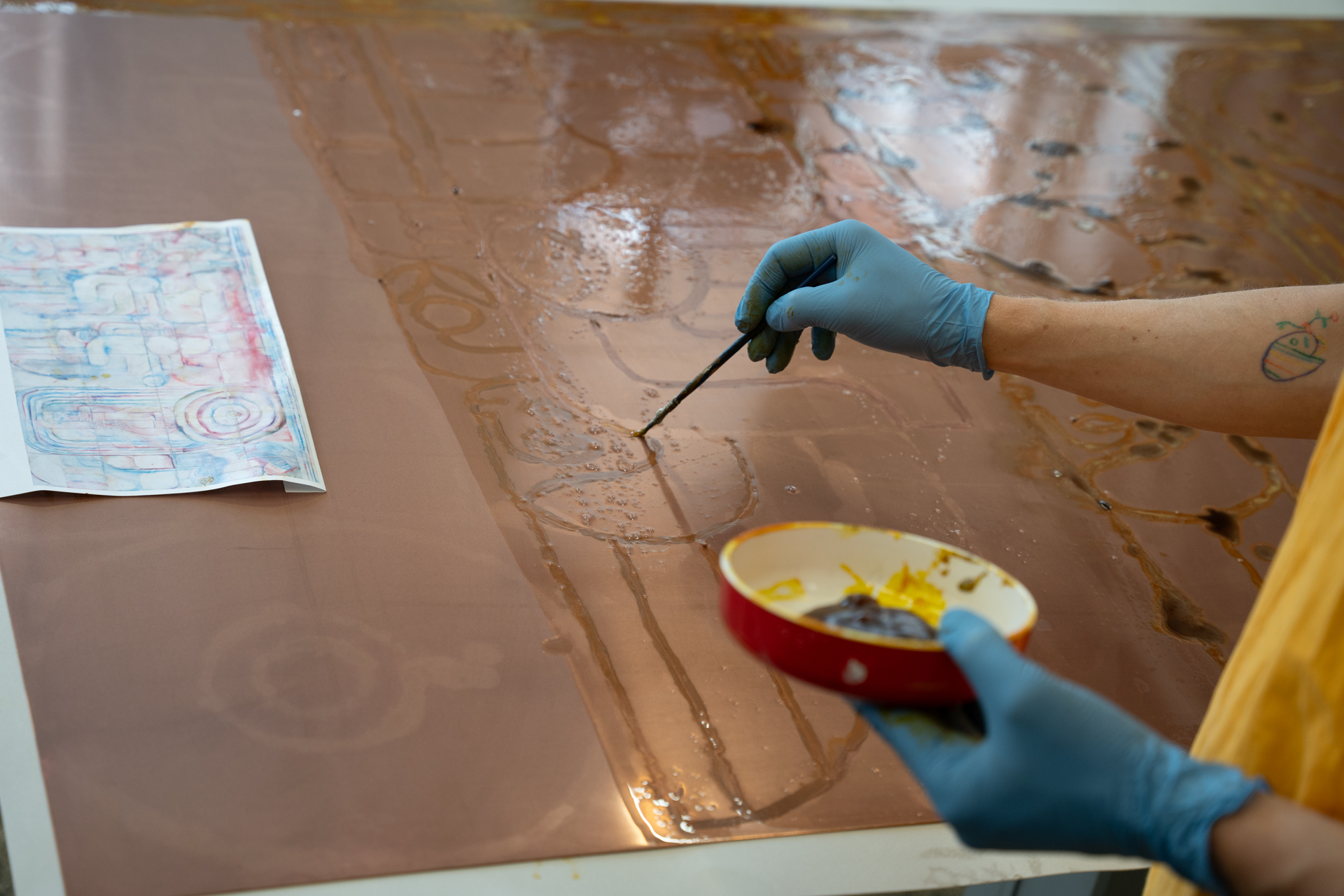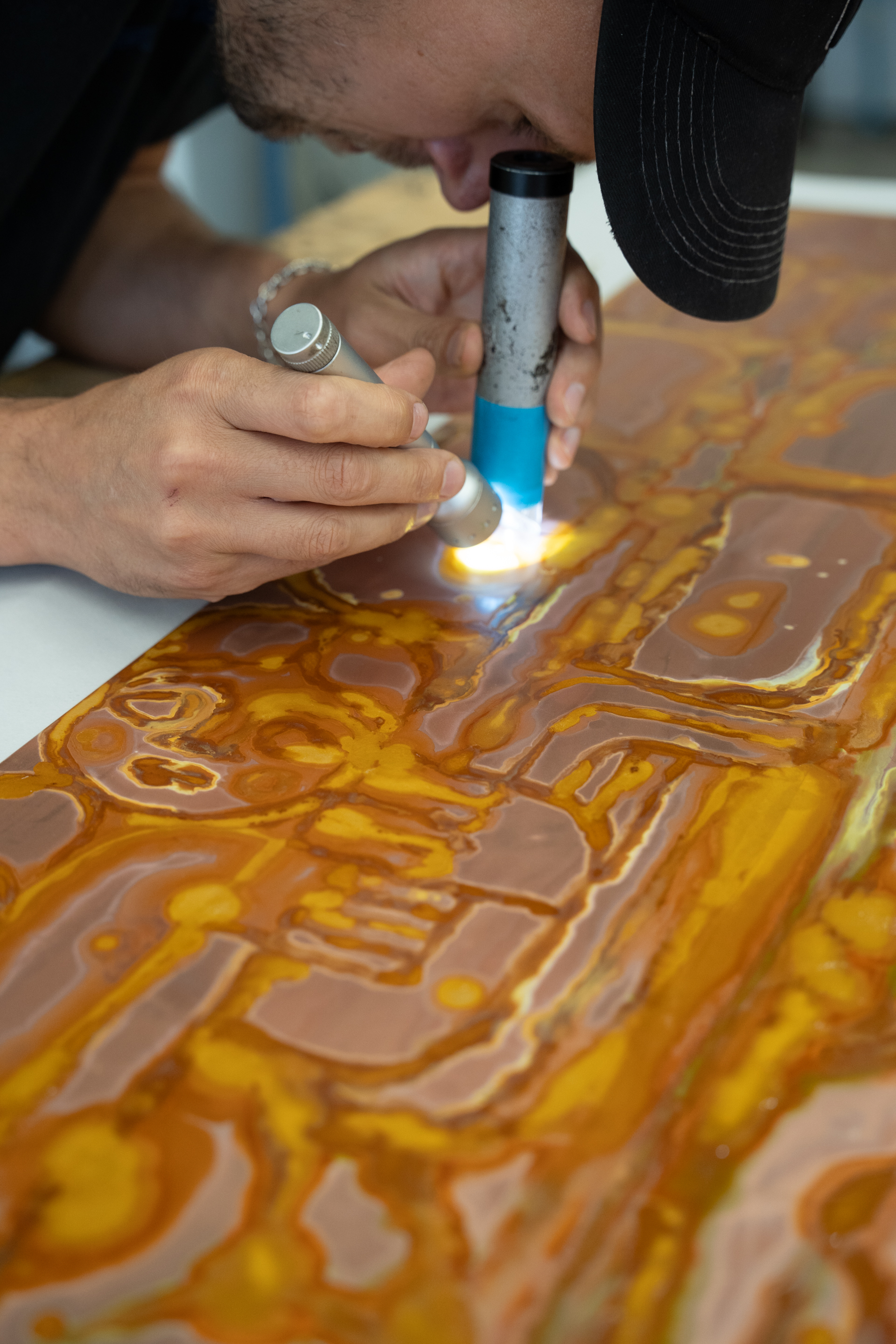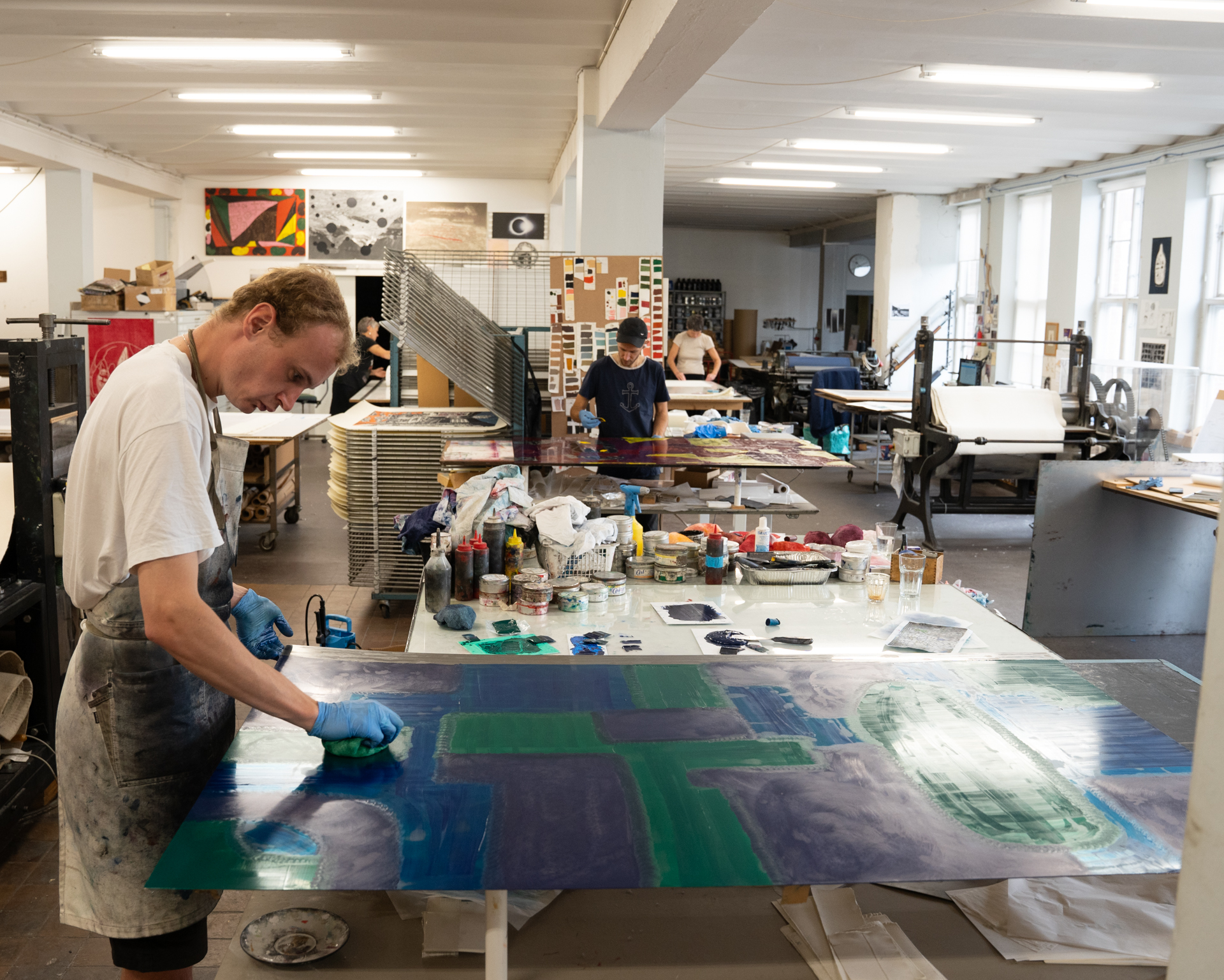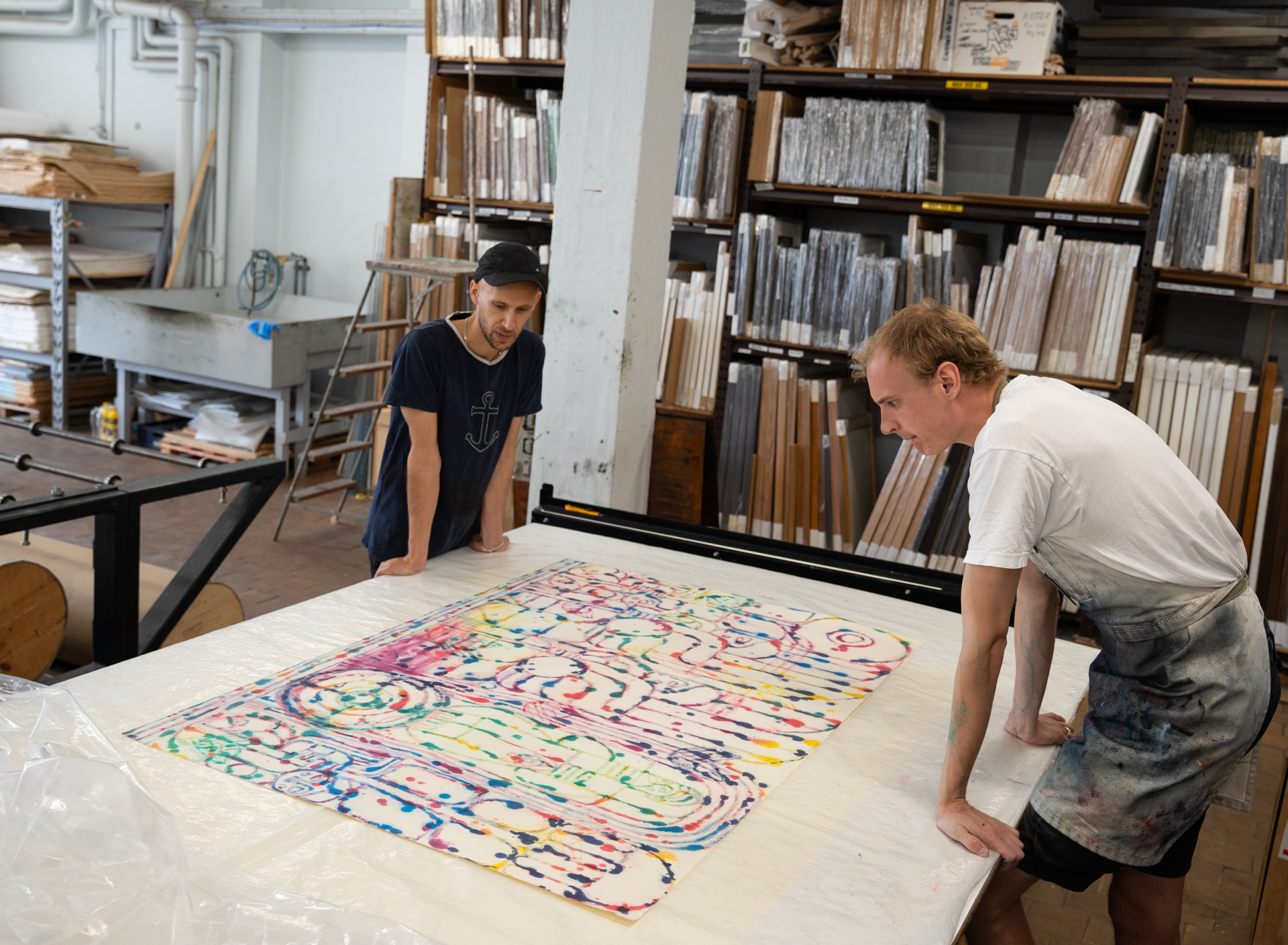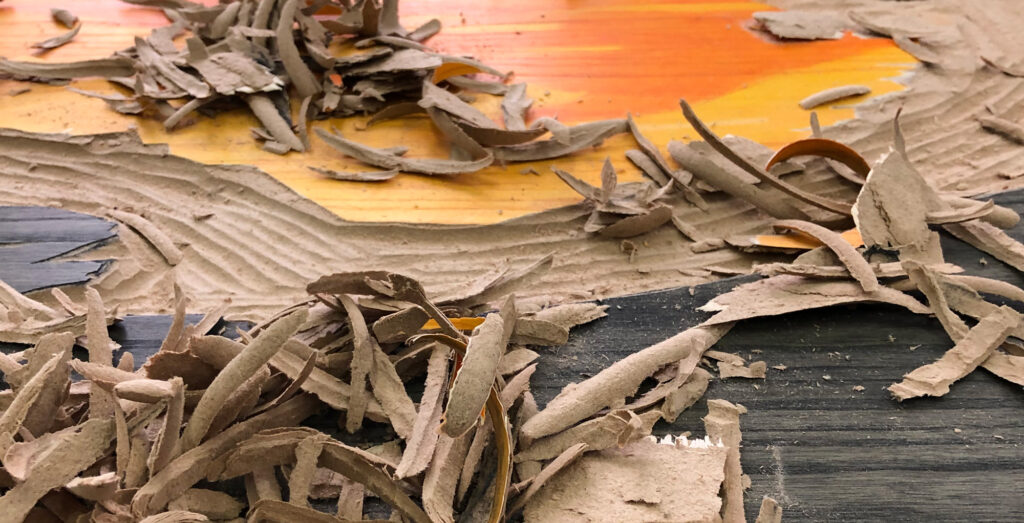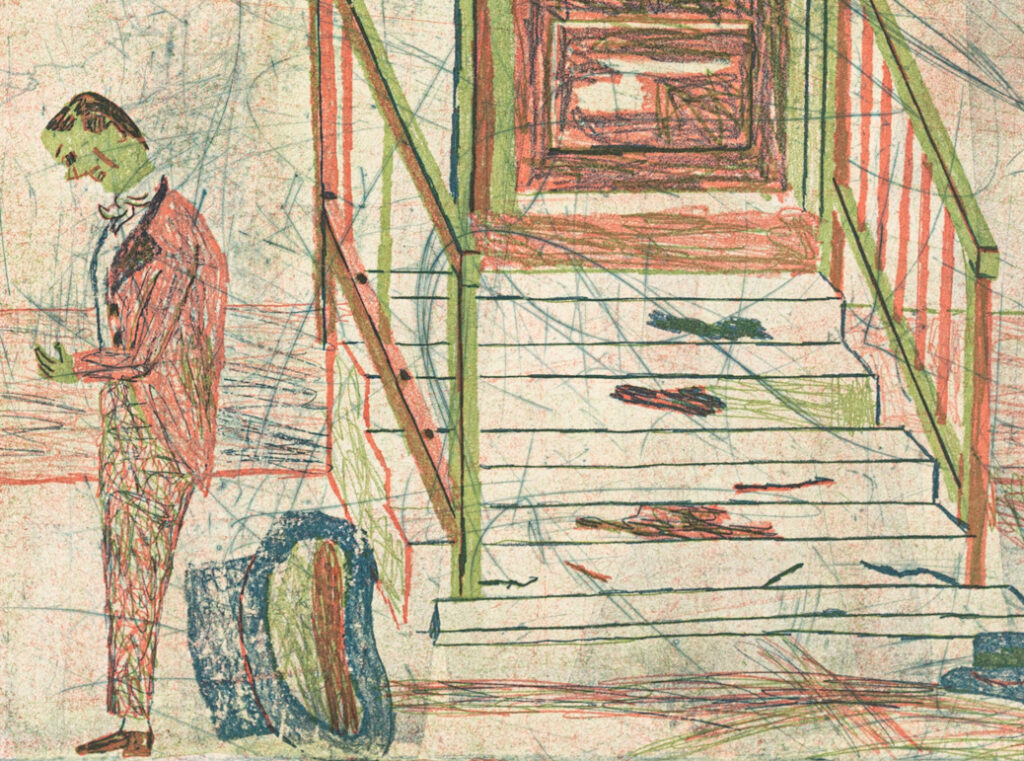Art reflects life in one artist's quest to represent one of the world’s greatest works of literature.
Alexander Tovborg | Dante’s Divine Comedy
Inquire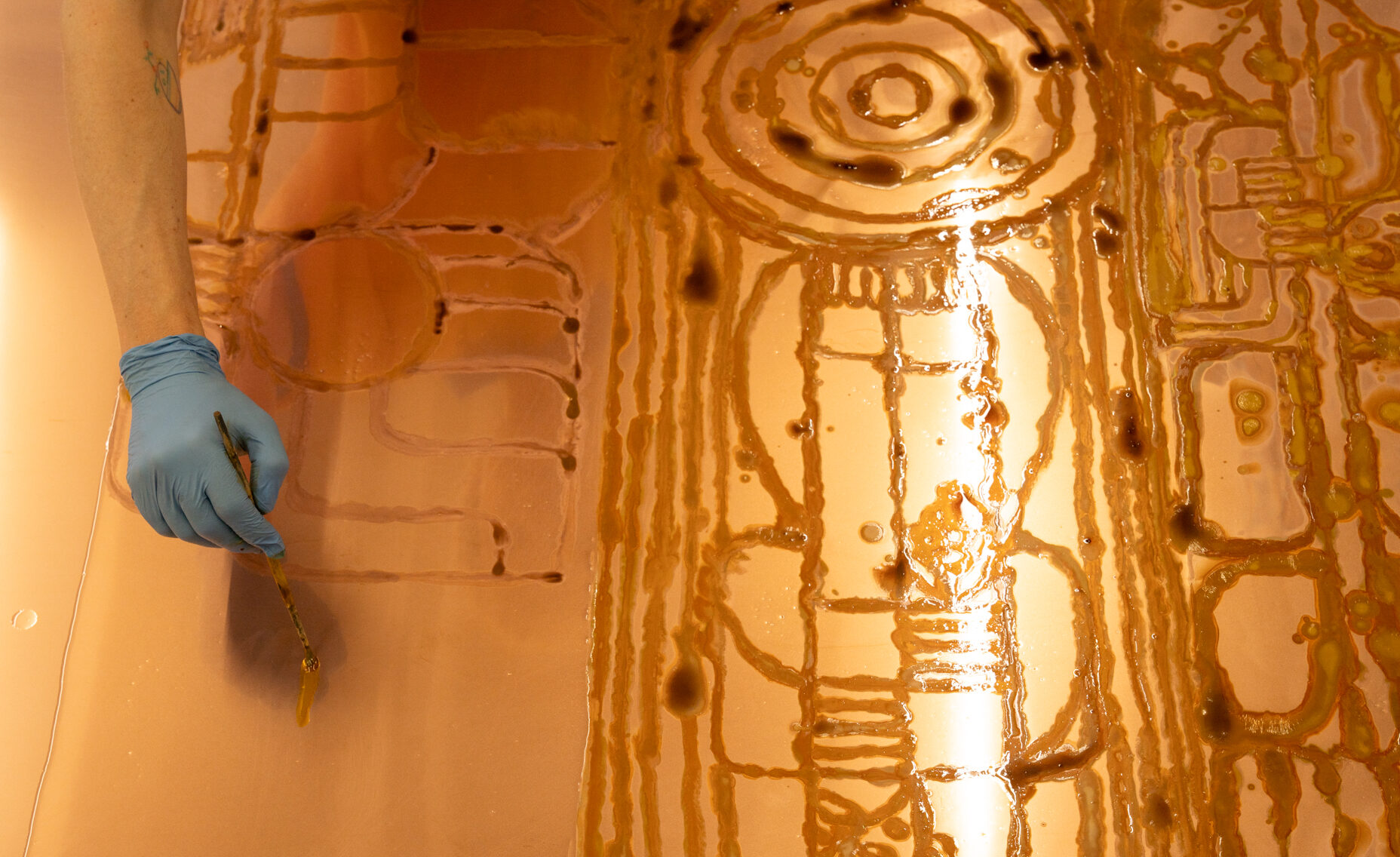
What is it that we actually believe in? What colours? What are the compositions? But most of all, what is the content? What is the moral? I really want to express my concern about what we believe in. Let’s talk about these stories because they are all around us. Let’s be critical about it. This is my contribution: to talk about these things. To question them.
Alexander Tovborg 2023
Alexander Tovborg’s paintings, prints and sculptures explore fundamental human questions through an investigation of religious narratives, myths and symbols. His unique visual universe unfolds in ornamental shapes and rich colour combinations through which he interweaves abstract and expressive elements with figurative imagery to consider who we are as human beings today.
An early and ongoing influence on Tovborg’s practice is Dante Alighieri’s iconic The Devine Comedy from 1320. This late-medieval poem is considered one of the world’s greatest works of literature, describing the afterlife as a journey of the soul towards God. Exiled from the city of Florence, Dante critiqued the Catholic Church with the Comedy’s graphic descriptions of torment that were used by the clergy to control its faithful followers. This critique of power in the name of religion and the absurdity and ingenuity of Dante’s work has inspired Tovborg, who’s practice mirrors the same ambiguity of both feeling connected to the message of religion and the church, and also being in a position of standing outside looking in. Through religious stories and artifacts, mythologies and symbology, Tovborg explores human identity and power in modern society – just as Dante did in his time. The significance of The Divine Comedy deepened for Alexander Tovborg when he first became the father of Dante, who was named after the great author.
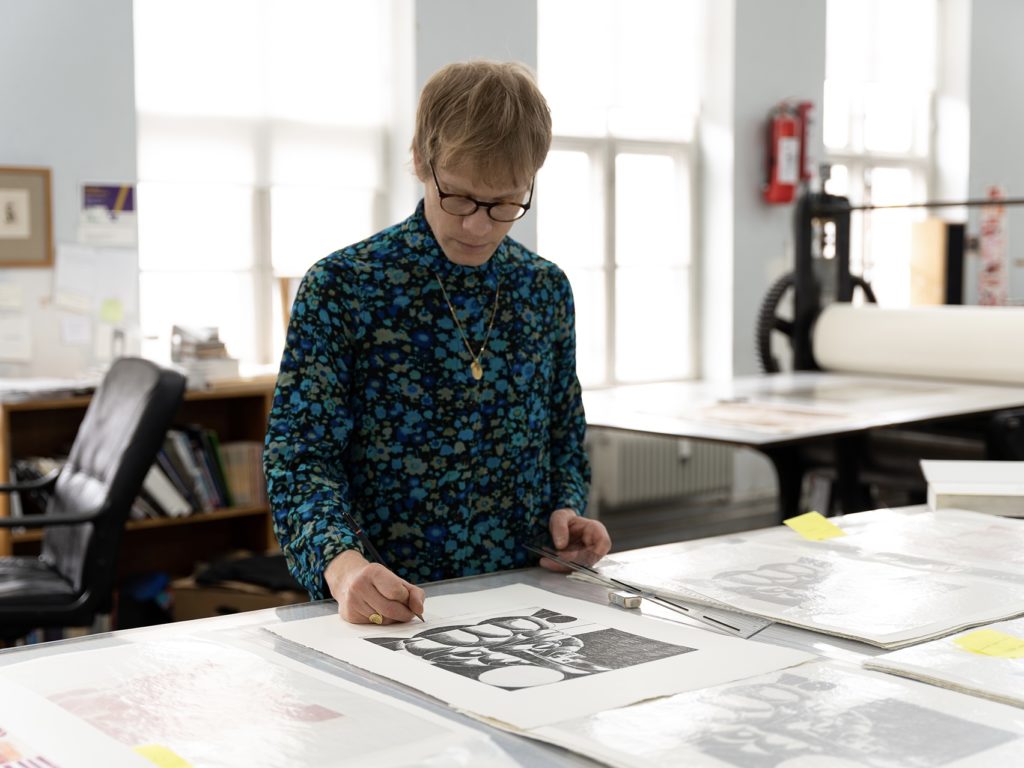
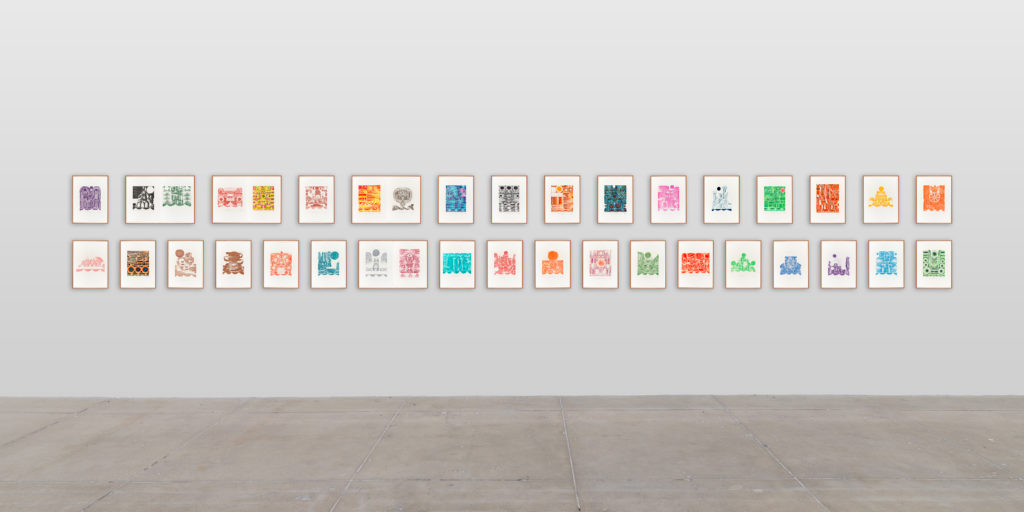
The Divine Comedy is divided into three books: Inferno, Purgatorio, and Paradiso. Tovborg embarked on the first part of the poem, Inferno, at the time of his son’s arrival in 2016. Inferno is an explicit rendition of the descent into Hell. Described as a voyage through nine downward circles, Dante himself appears as the main character, accompanied by Virgil, the great poet of ancient Rome. Dante was the first to systematically describe the afterlife in Hell like a funnel: the deeper one descended into the pit of Hell, the more serious was one’s crime and the punishment to be meted out.
Tovborg’s resulting portfolio of 37 etchings from 2017 to 2018 is inspired by each specific canto (verse) of Inferno. The hallucinatory nature of descending into Hell is expressed in Tovborg’s psychedelic colors, which are reminiscent of a pre-colonial South American colour palette. The ornamental patterns were created using line etching and soft ground etching, whereby Tovborg drew into prepared grounds on the copper plates, which were then etched with acid. The resulting motifs are simple and sincere interpretations of Dante’s Inferno that also reference the stylized figurative language of the Viking Age, Ancient Greece, pre-Roman and the ornamentation of early Danish coins.
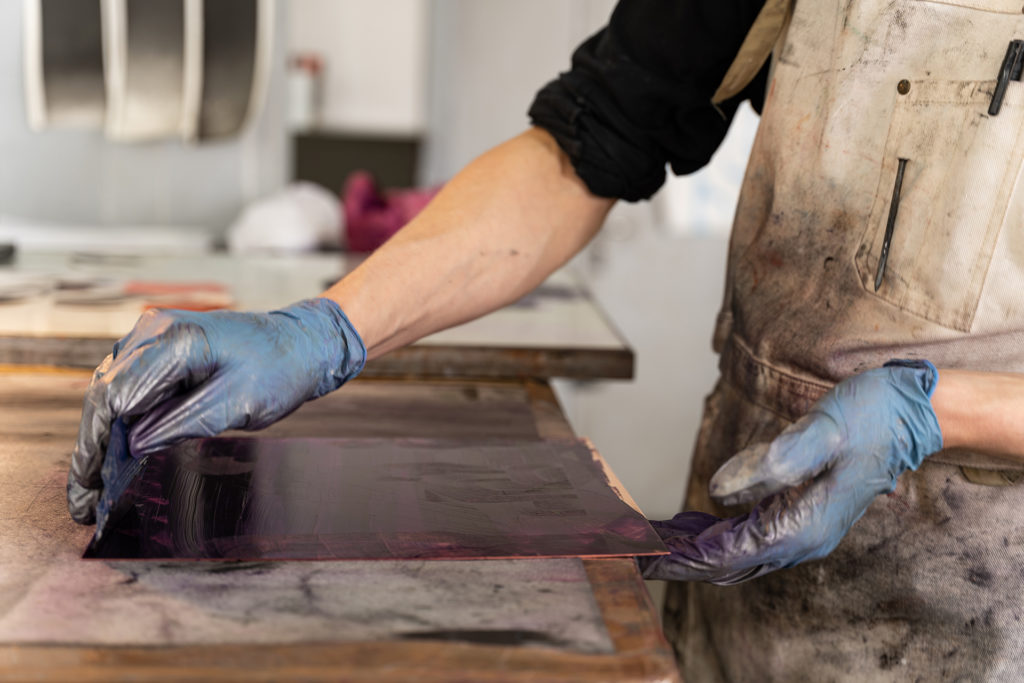
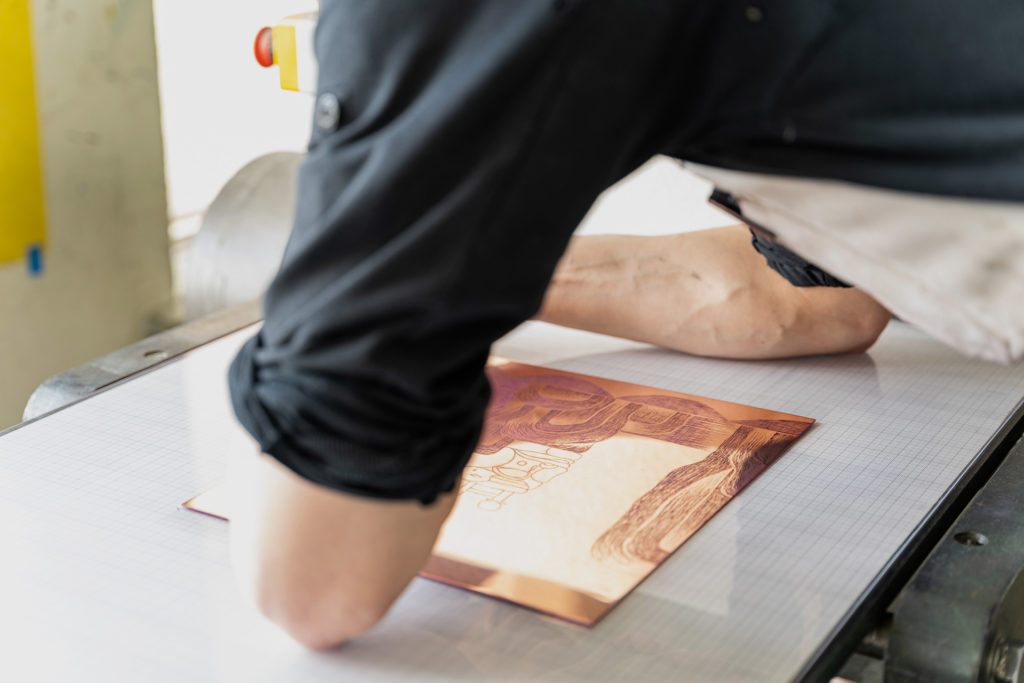
In 2023 Tovborg turned his attention to Purgatory, the second book of The Divine Comedy – this time in a single, large-scale etching entitled Purgatory Canto XXIX: Beatrice Addressing Dante from the Chariot.
This radical change of format echoes the narrative structure of The Divine Comedy: after Dante’s voyage through the nine circles of Hell, Purgatory describes his upward journey on a mountain island, crossing the seven terraces of suffering and growth, corresponding to the seven deadly sins, culminating in Earthly Paradise at the top of the mountain.
While the Inferno etchings are characterized by sharp lines, precise gestures and psychedelic combinations of complementary colours, in Purgatory the lines and colour gradients are more organic. The labyrinth of lines in Tovborg’s large-scale, immersive Purgatory possesses an almost otherworldly glow, the individual colours merge into one another and seem to pulsate.
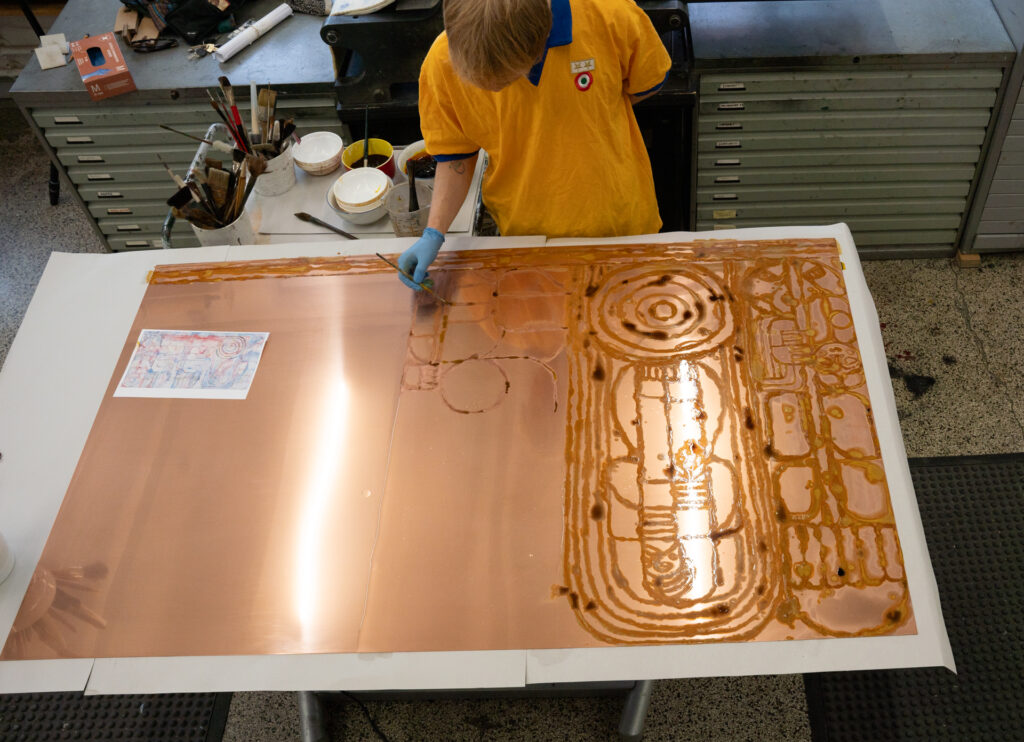
Inspired by William Blake, I wanted to do an illustrated version of the Comedy for my son, Dante.
Alexander Tovborg
The choice of colours and painterly marks reference William Blake’s famous 19th century watercolour illustrations of The Divine Comedy, another source of inspiration for Tovborg. In the years just before he died, William Blake created 102 watercolours that featured brightly coloured and highly imaginative creatures emerging from Dante’s vivid prose. Tovborg chose to create Purgatory in a similarly painterly fashion, using the printmaking technique of spit bite aquatint in which acid is painted onto copper plates that have been prepared with a layer of aquatint. The strength of the acidic solution determines the strength of the painted lines and allowed Tovborg to create a variety of gestural marks across the two copper plates of Purgatory. These plates were then inked using multiple colours across their surfaces. When the two layers are printed together, the colours blend in a similar way to layers of watercolour, bringing the image to life and drawing the eye around the dynamic composition.
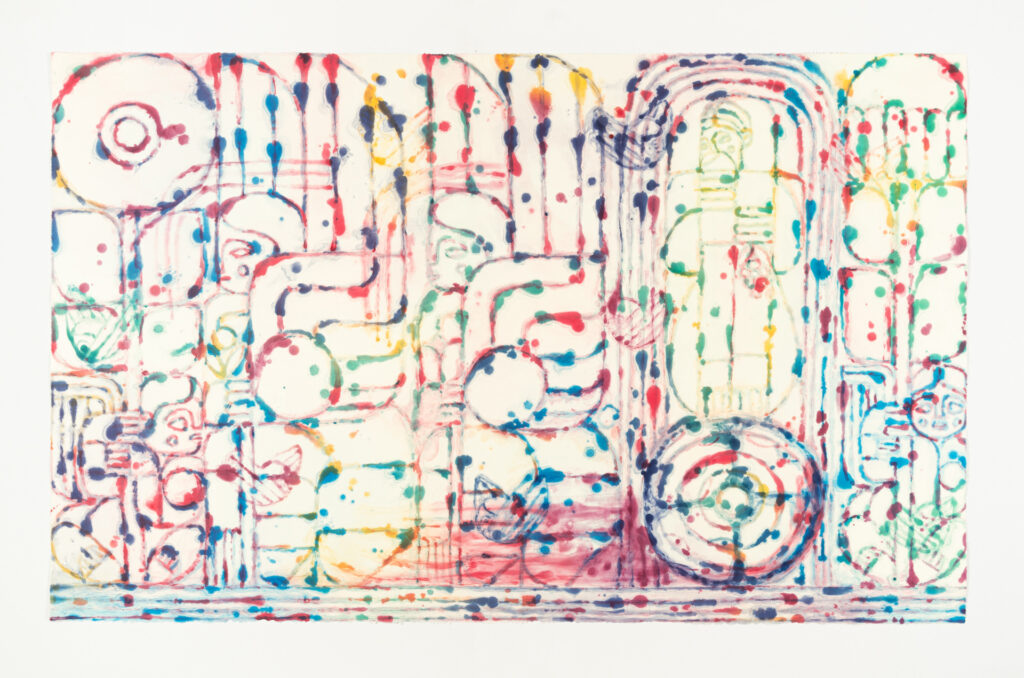
The etching also refers to Beatrice (2023), a large-scale painting that Tovborg created for his 2023 solo exhibition at Kunsthal Charlottenborg in Copenhagen. The Griffin, a mythical creature half eagle, half lion, pulls Beatrice’s chariot in the 29th canto of Dante’s Purgatory.
While working on the Purgatory print, Tovborg dedicated smaller copper plates to the creature itself, focusing on a detail of his large-scale etching. This second print takes its title from its subject, Griffin 2023, is also created using spit bite aquatint and is an intimate depiction of Dante’s mythical creature.
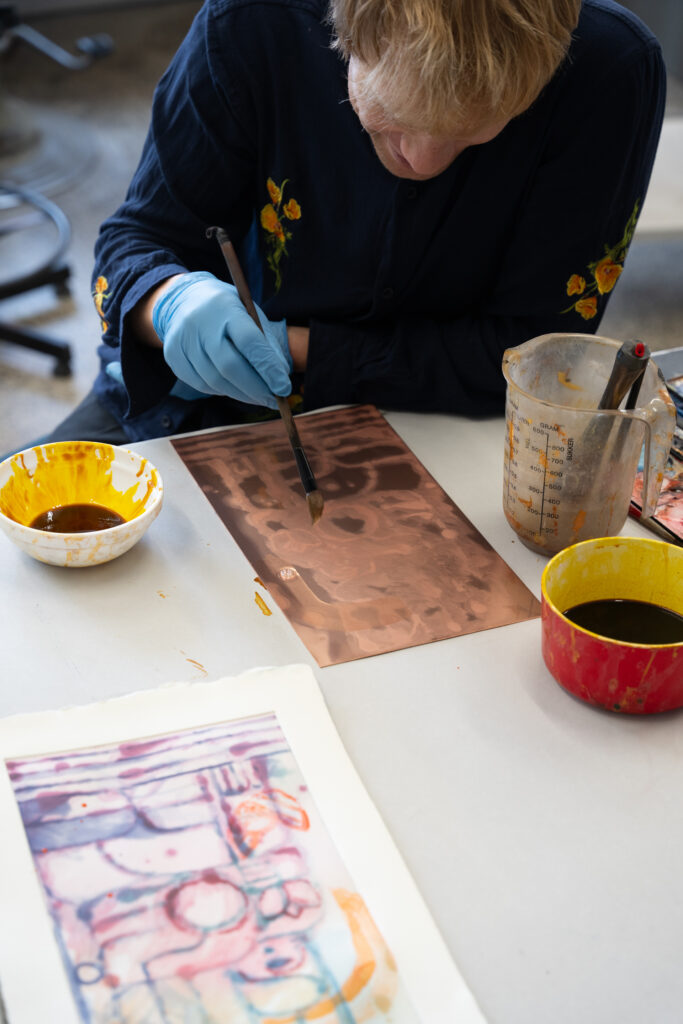
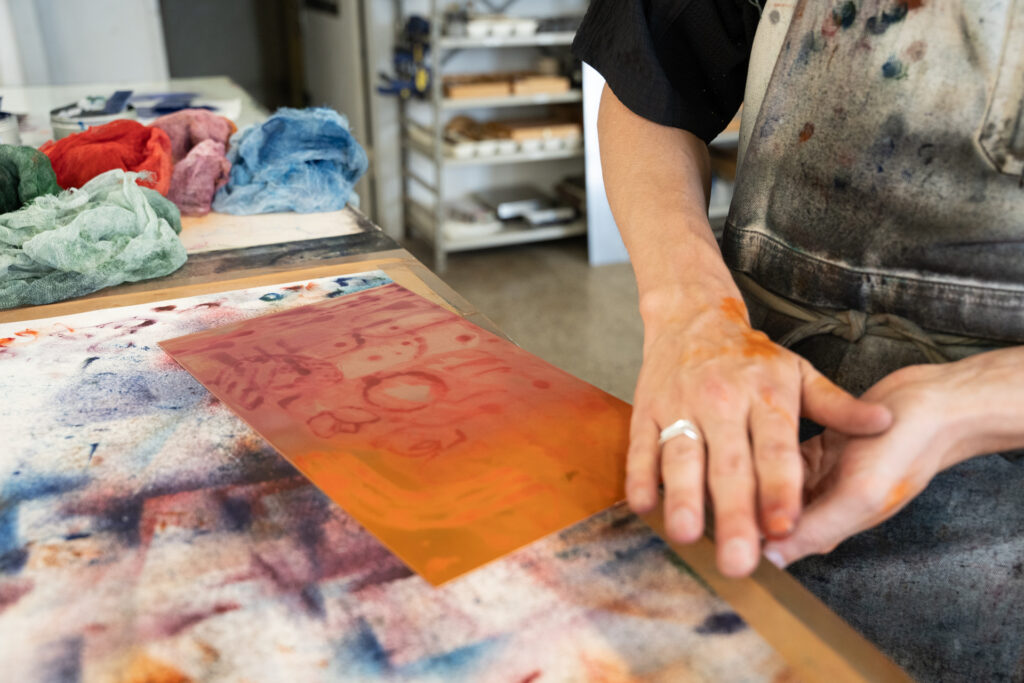
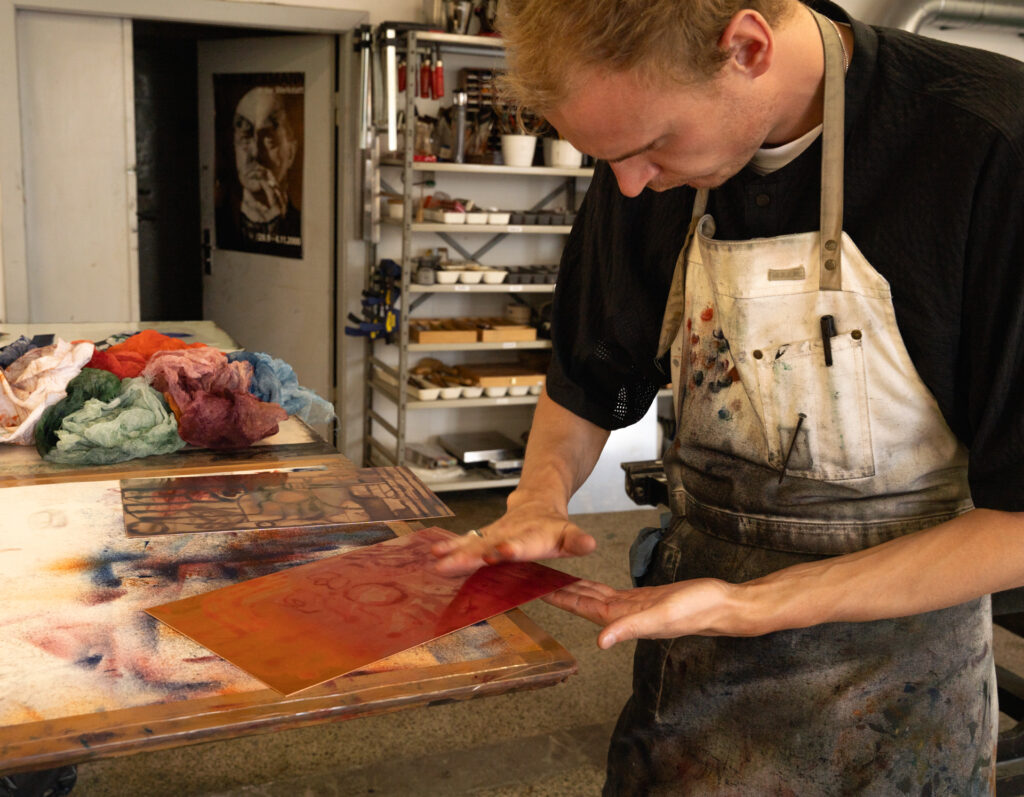
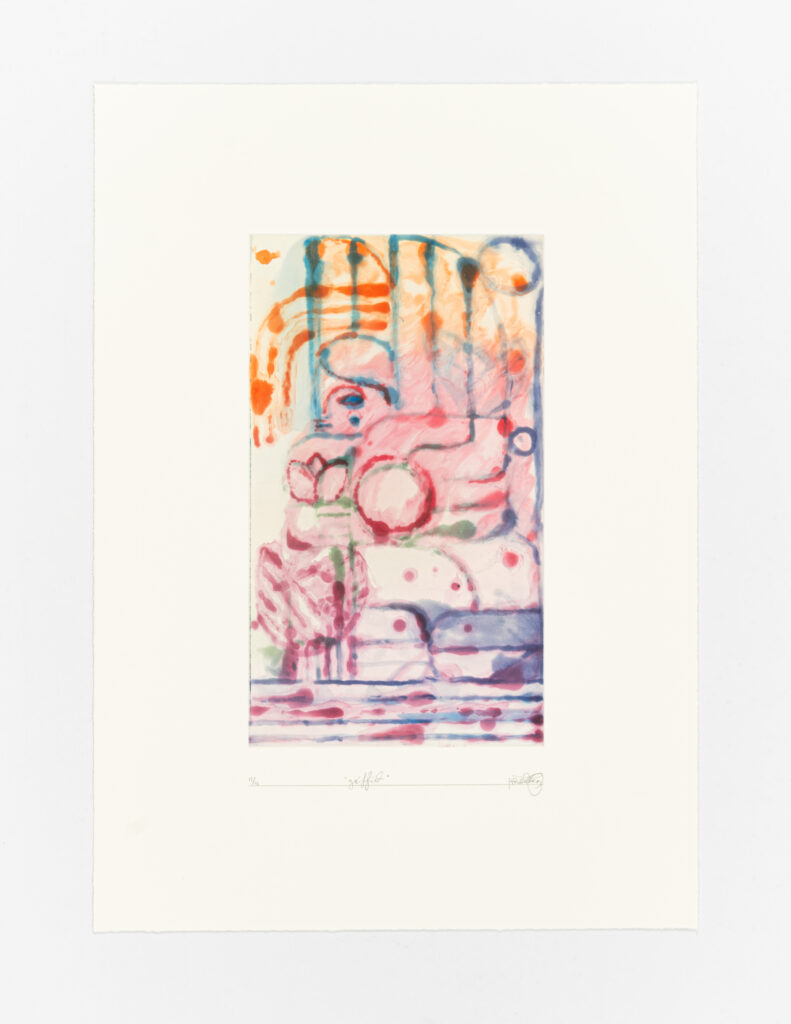
The third and final part of Dante’s The Devine Comedy is Paradiso.
Tovborg plans to return to BORCH Editions to create new prints in response to this third book.
About Alexander Tovborg
Alexander Tovborg’s distinctive and immersive artistic practice encompasses painting, prints, sculpture, installation, and performance. His figurative imagery, ornamental shapes and rich colour combinations are explorations of fundamental human questions that have arisen through religious narratives, mythology and symbols. Through his work he considers how our own grand narratives were formed and how they might change and evolve.
Alexander Tovborg has exhibited widely since 2005, with solo exhibitions at Kunsthal Charlottenborg (Copenhagen 2023), Rudolph Tegner Museum (Dronningmølle 2019), GL Strand (Copenhagen 2016) and Overgaden (Copenhagen 2014) among others. He has also notably shown at ARKEN (Ishøj 2021 & 2018), ARoS (Aarhus 2017), IMMA Museum of Modern Art (Dublin 2013), Spiritmuseum (Stockholm 2015), Holstebro Kunstmuseum (Holstebro 2017) and KØS (Køge 2017 & 2013). His works are represented in the public collections of Kunsthalle Bremen (Bremen), Hammer Museum (Los Angeles), ARKEN (Ishøj), ARoS (Aarhus) and Museet for Religious Kunst (Lemvig).
Alexander Tovborg was born 1983 in Copenhagen, Denmark, where he lives and works today. He has been collaborating with BORCH Editions since 2007.
Learn more about Alexander Tovborg
